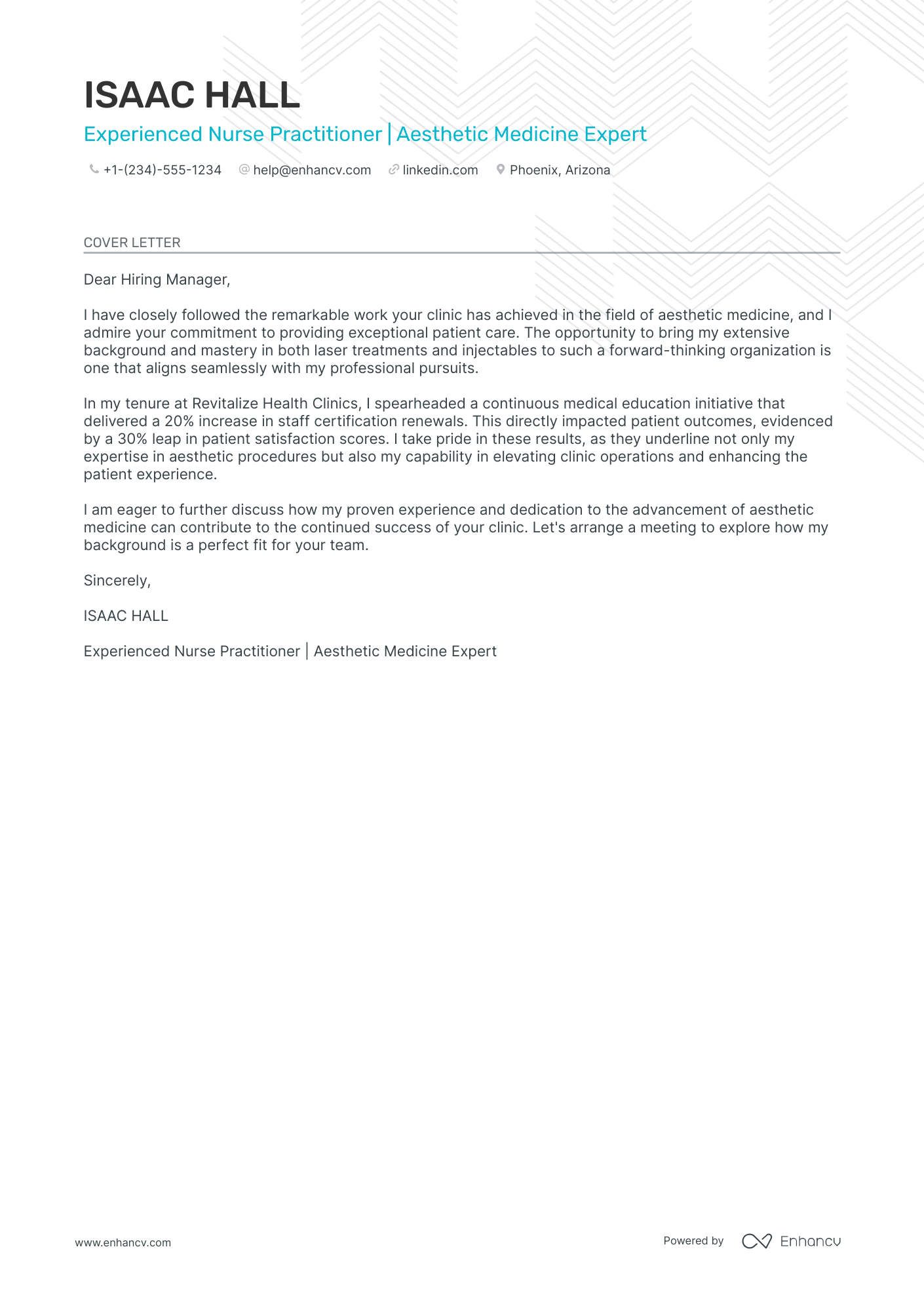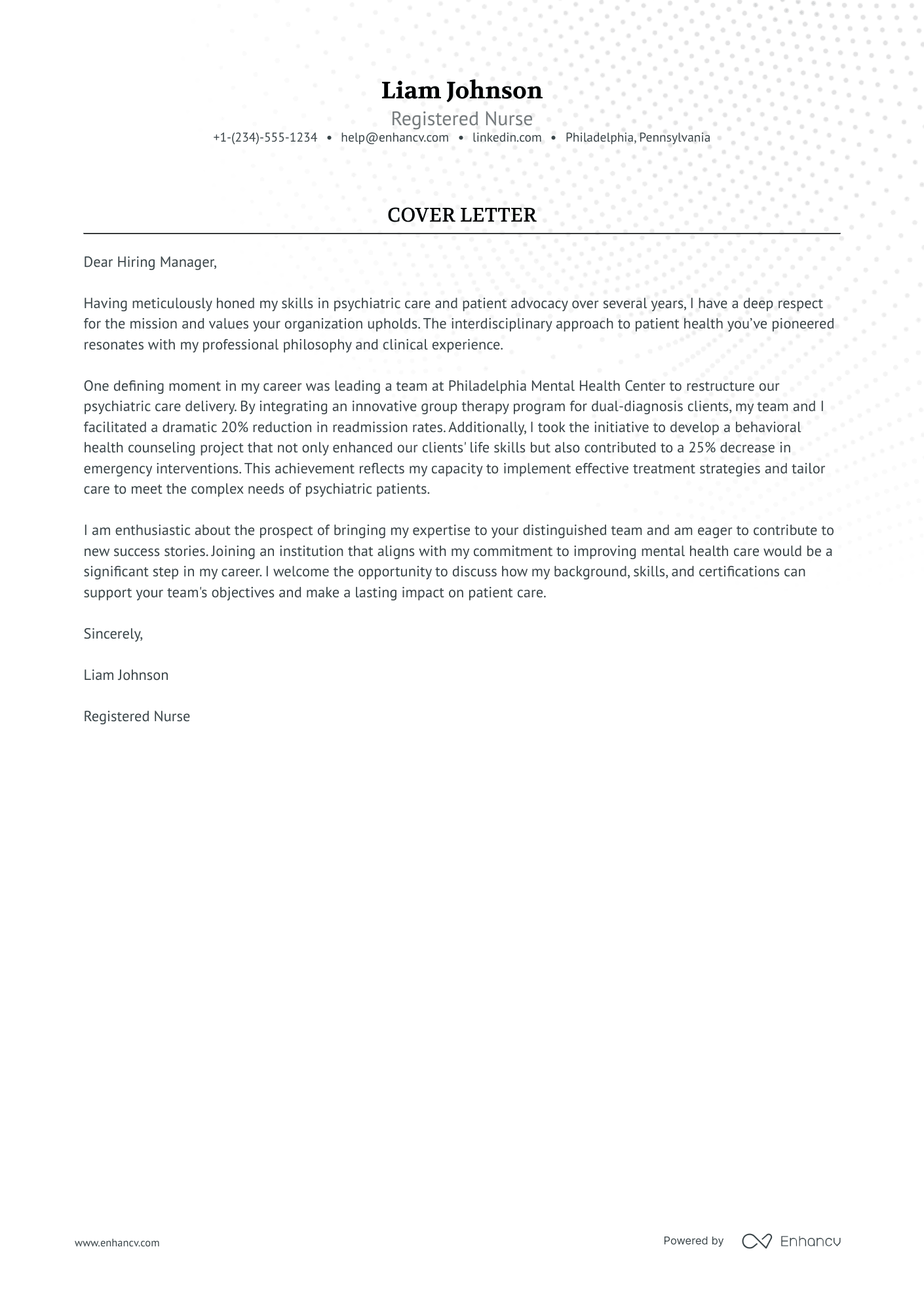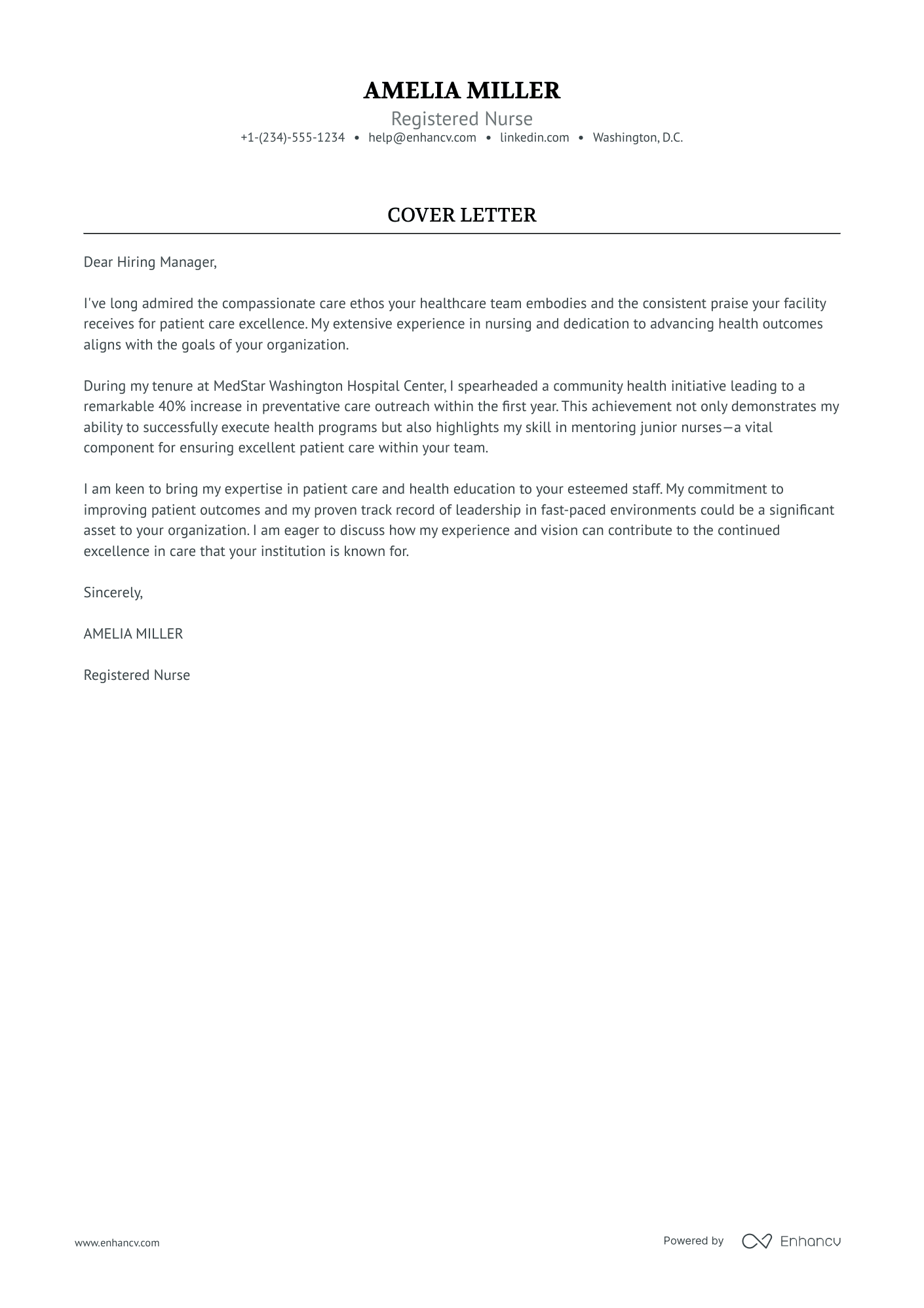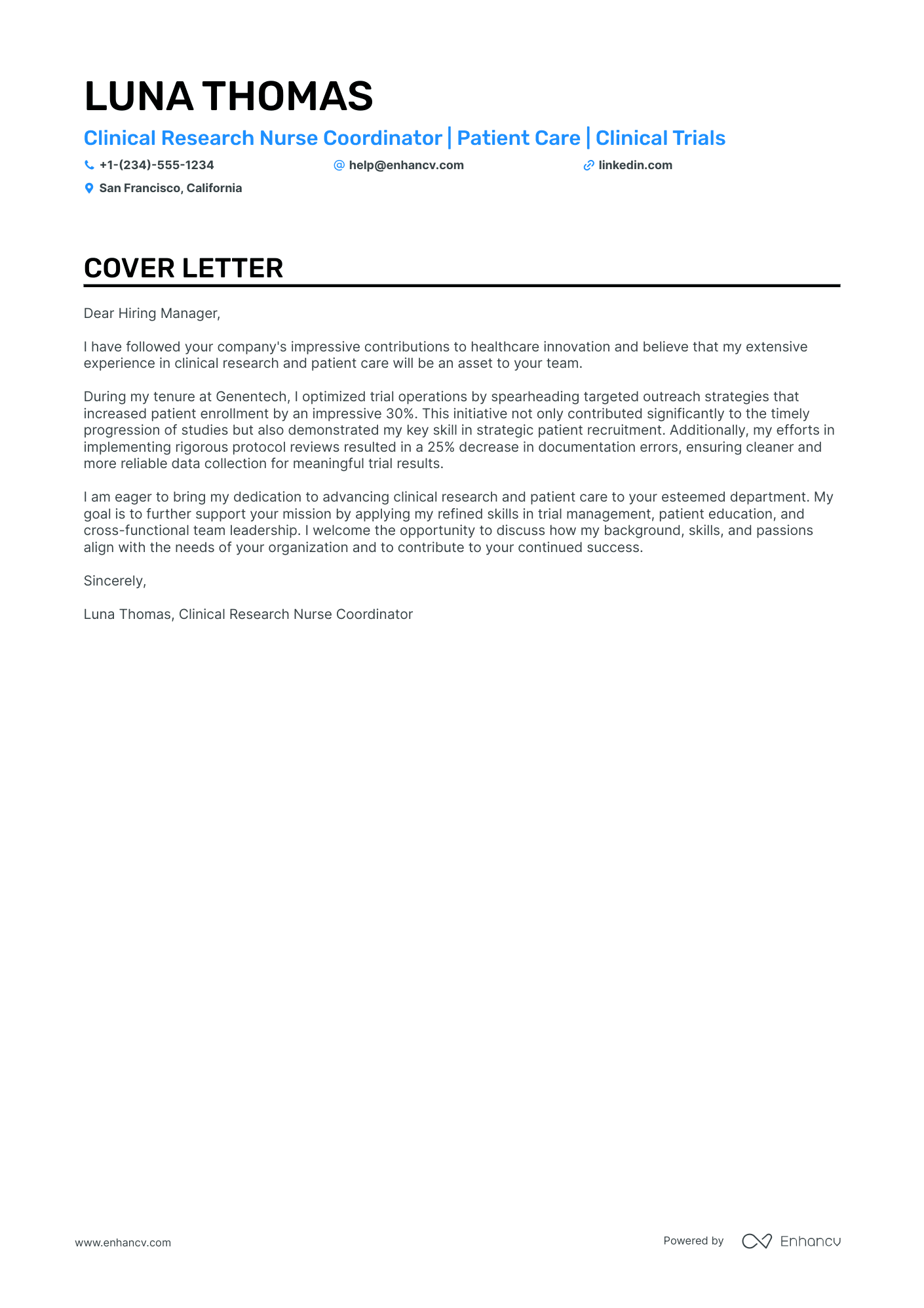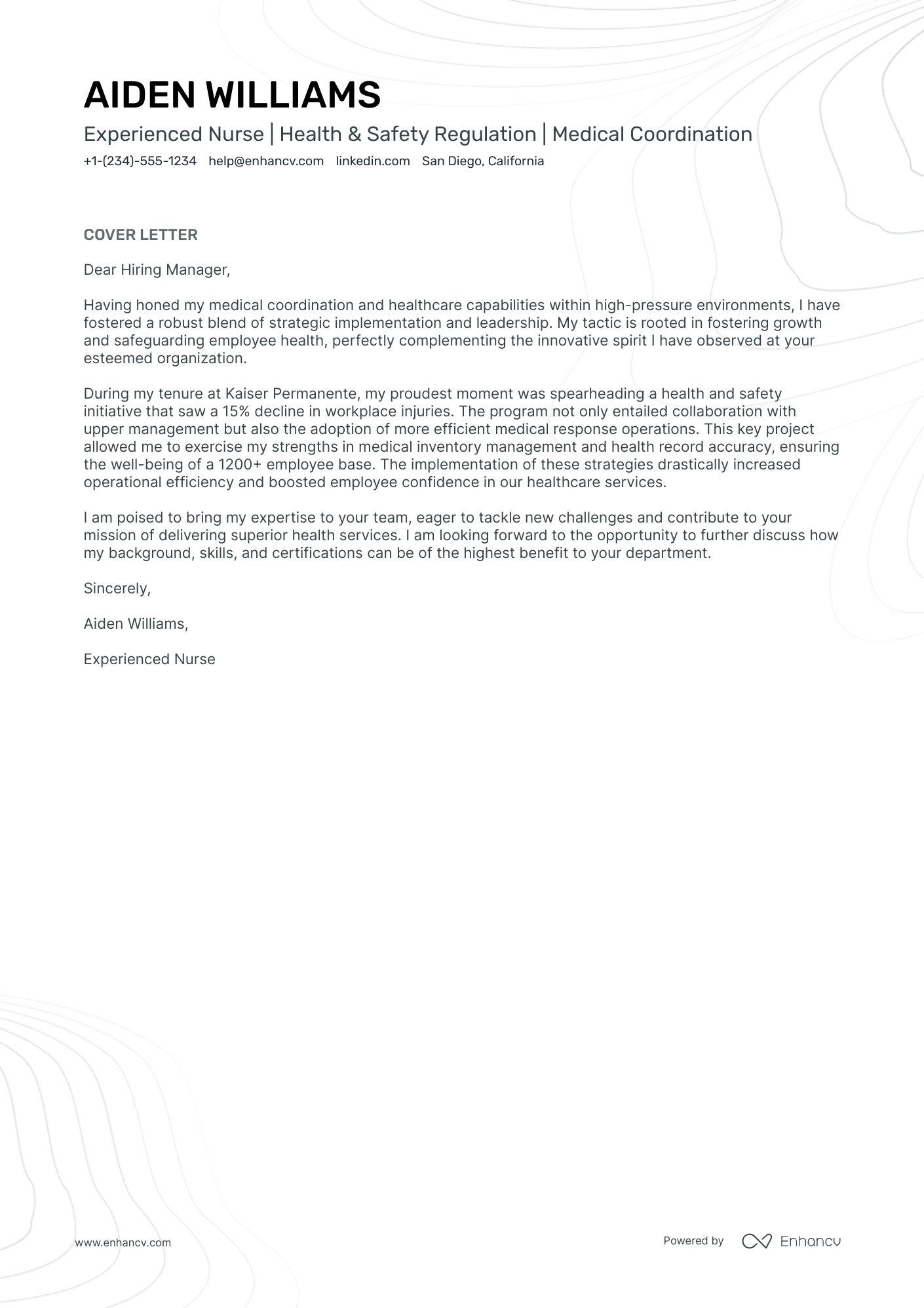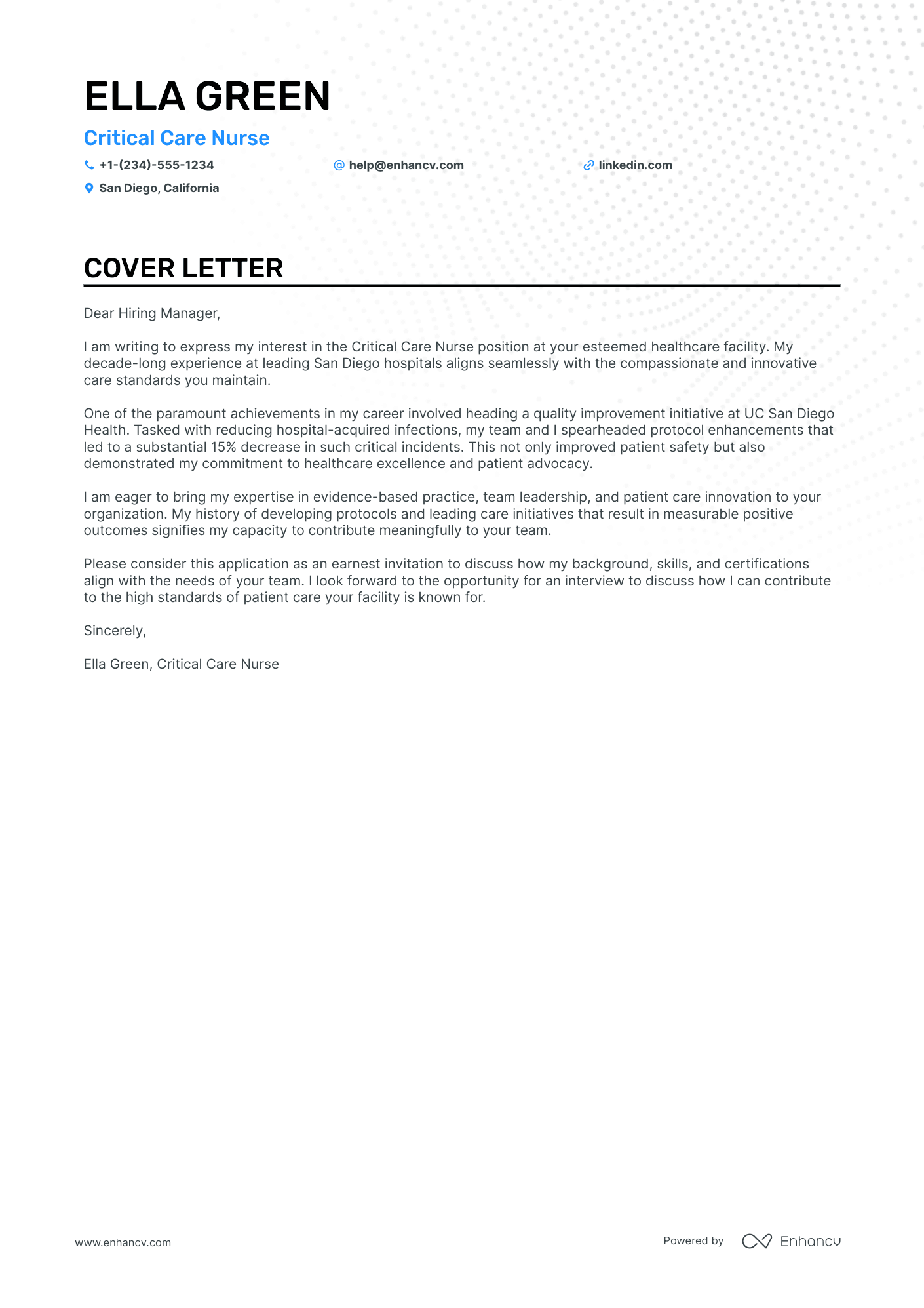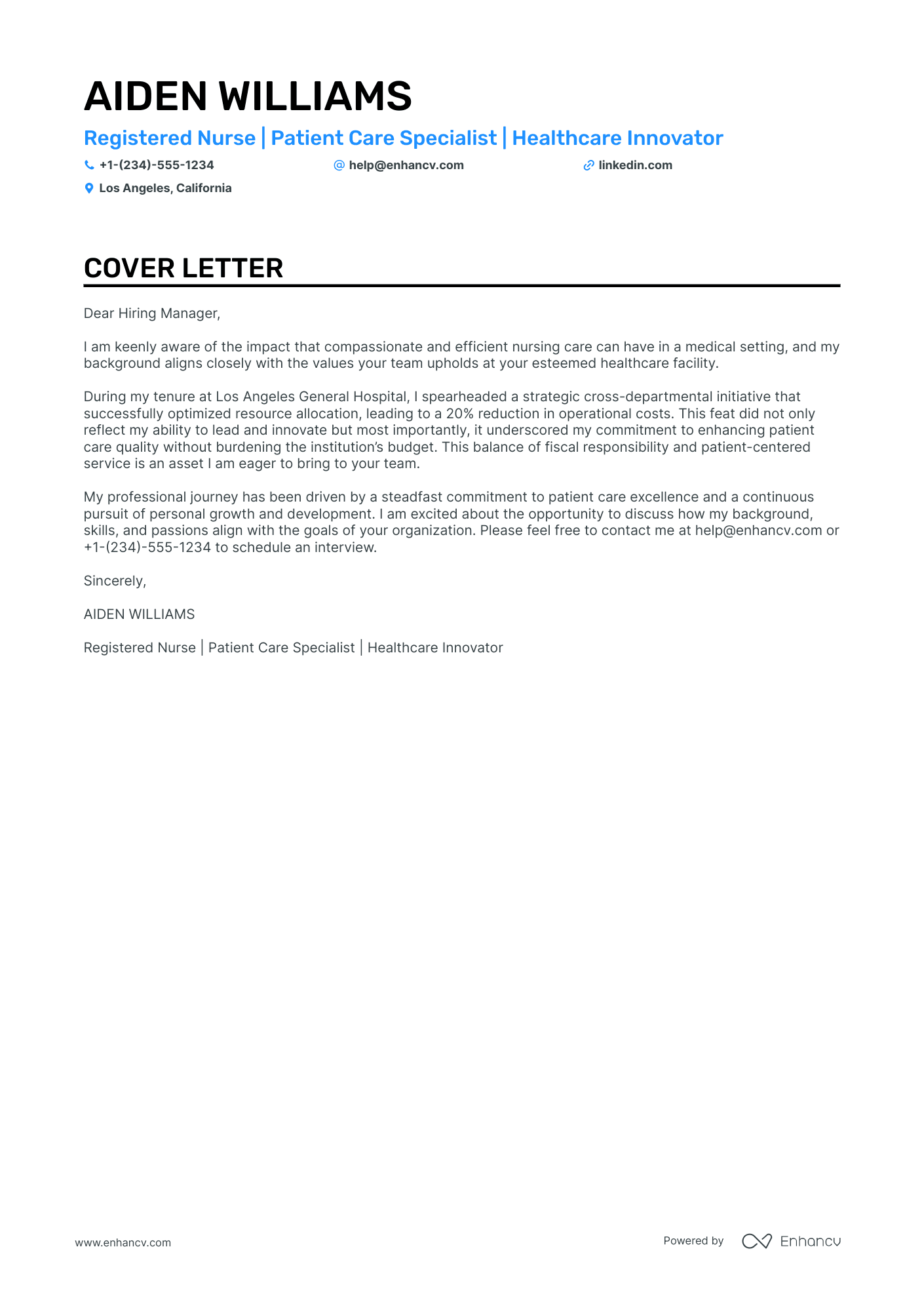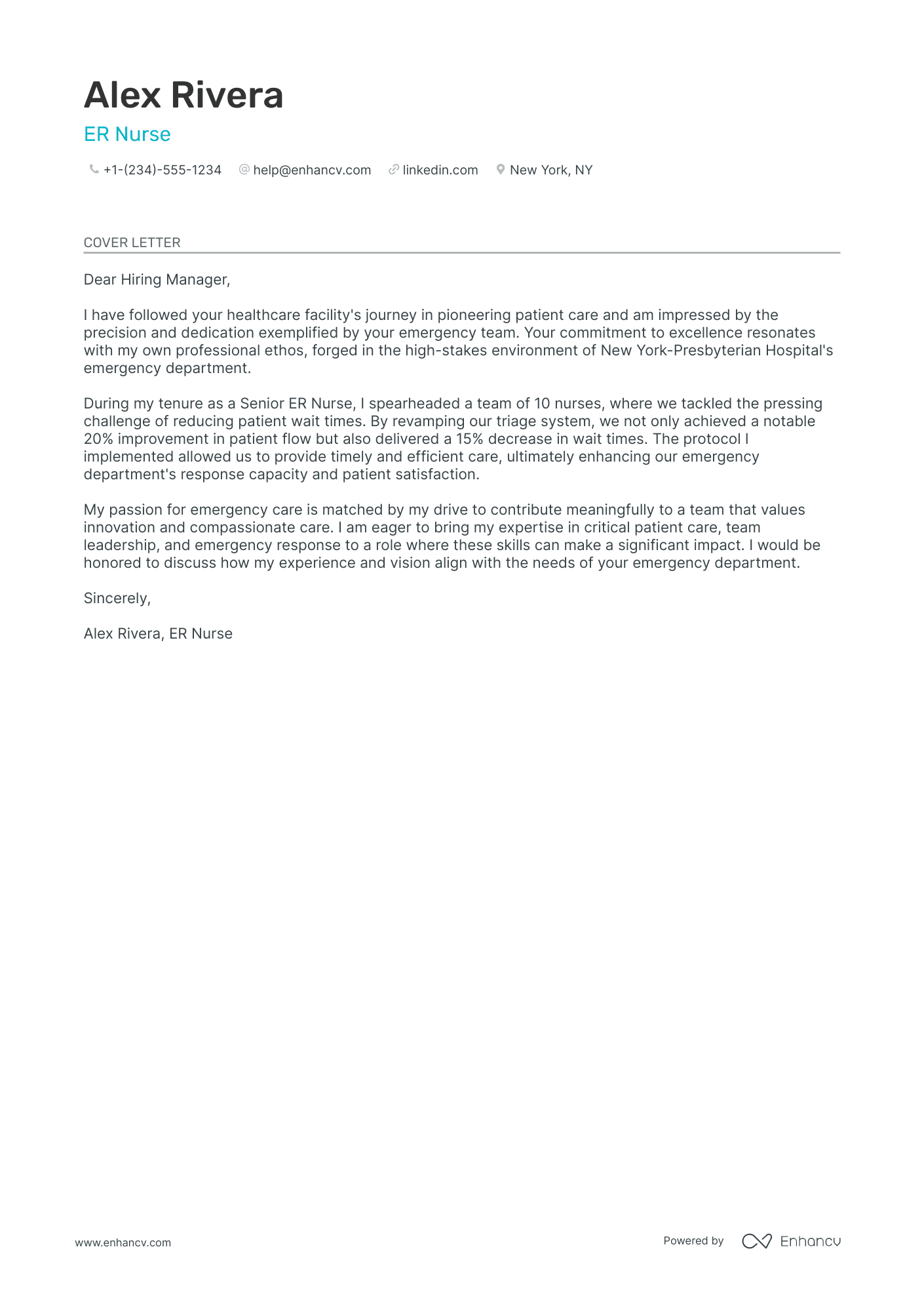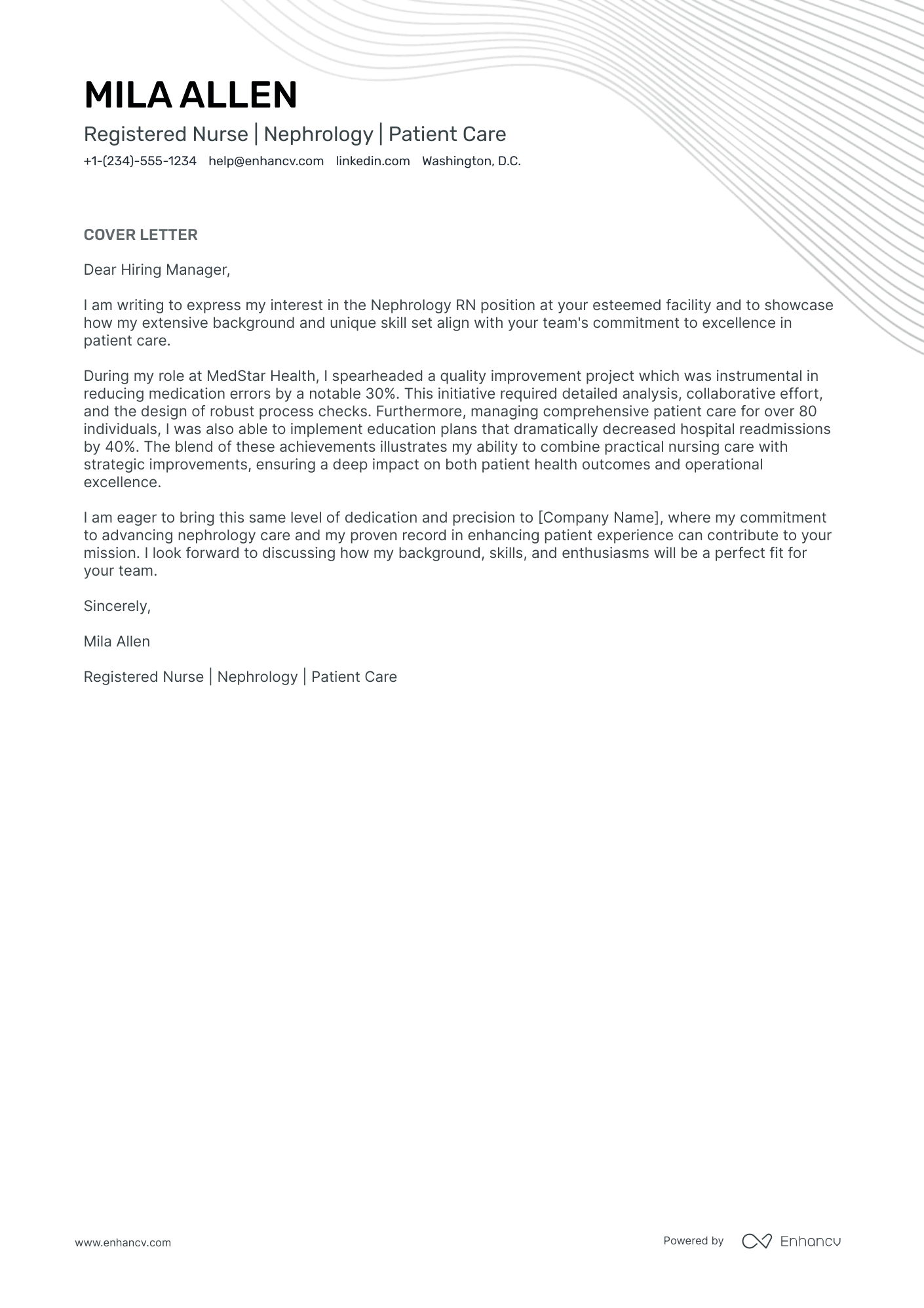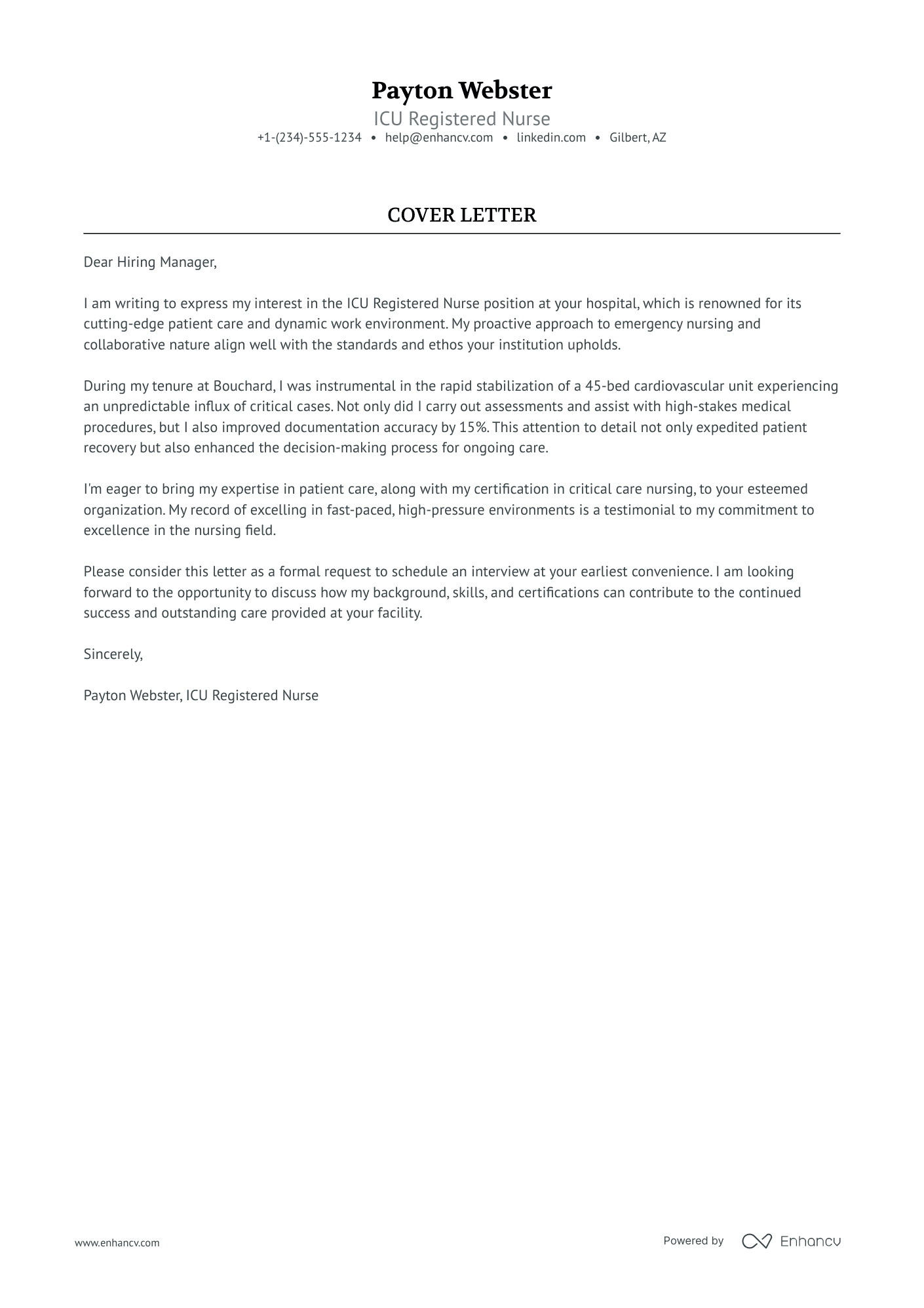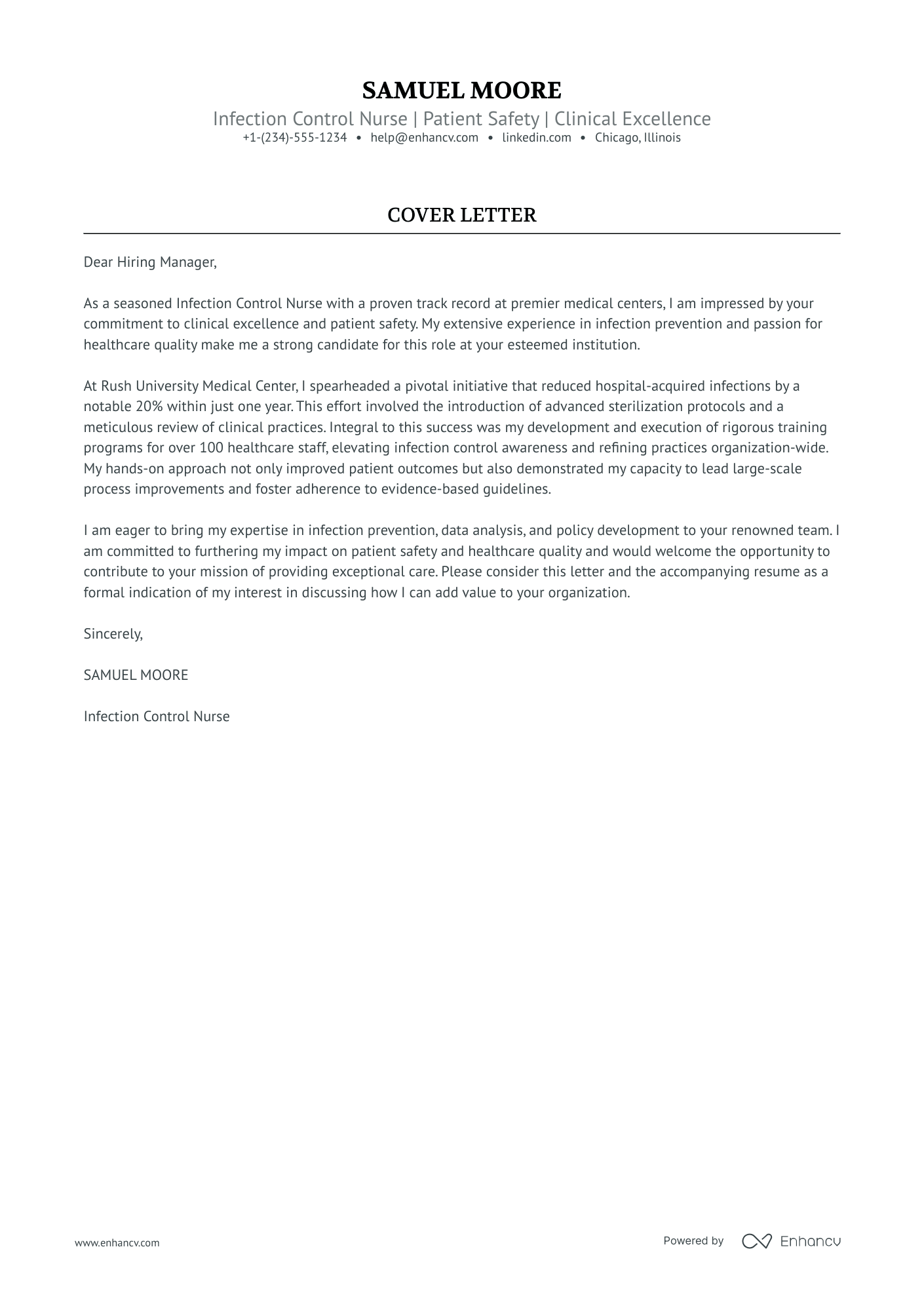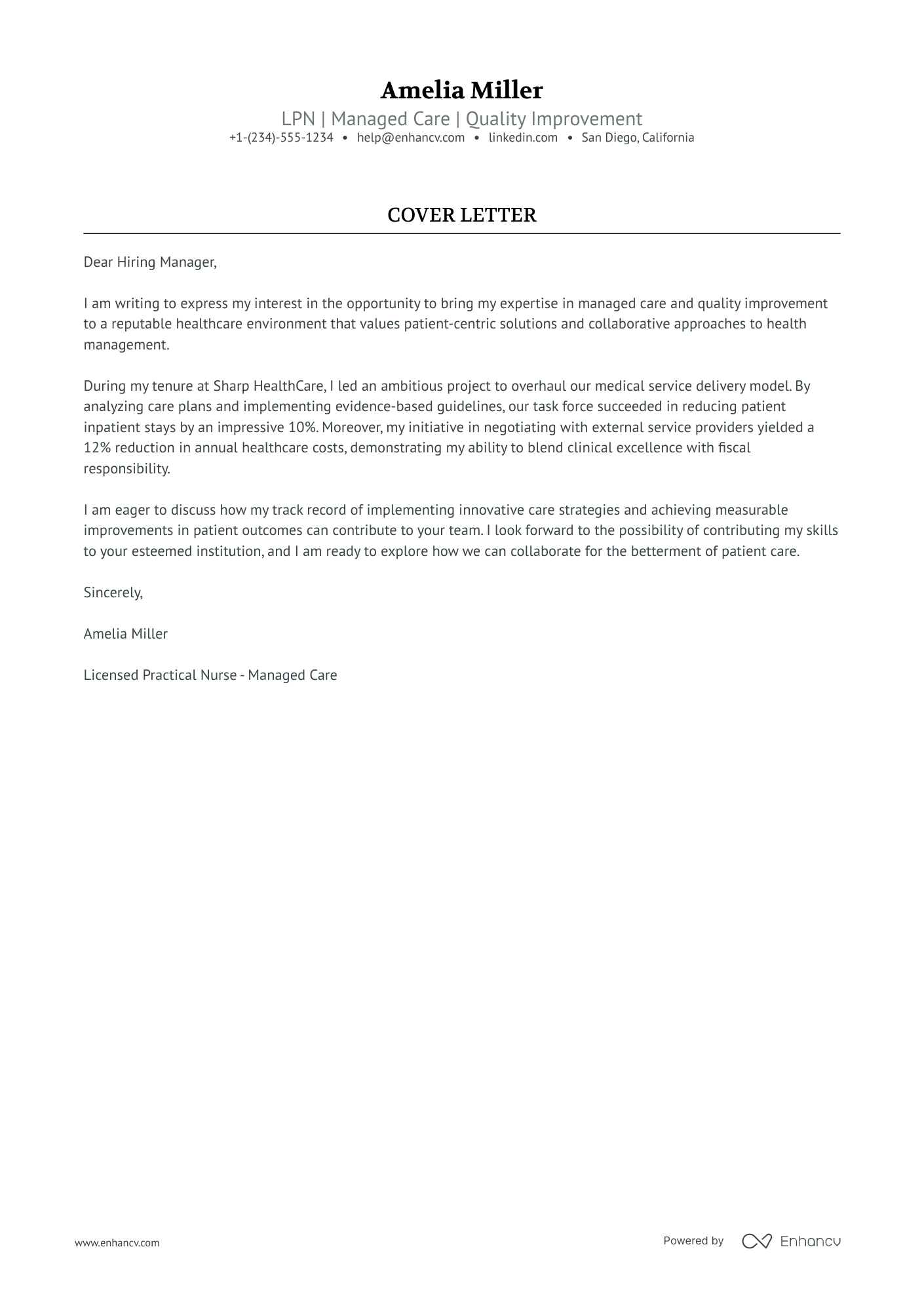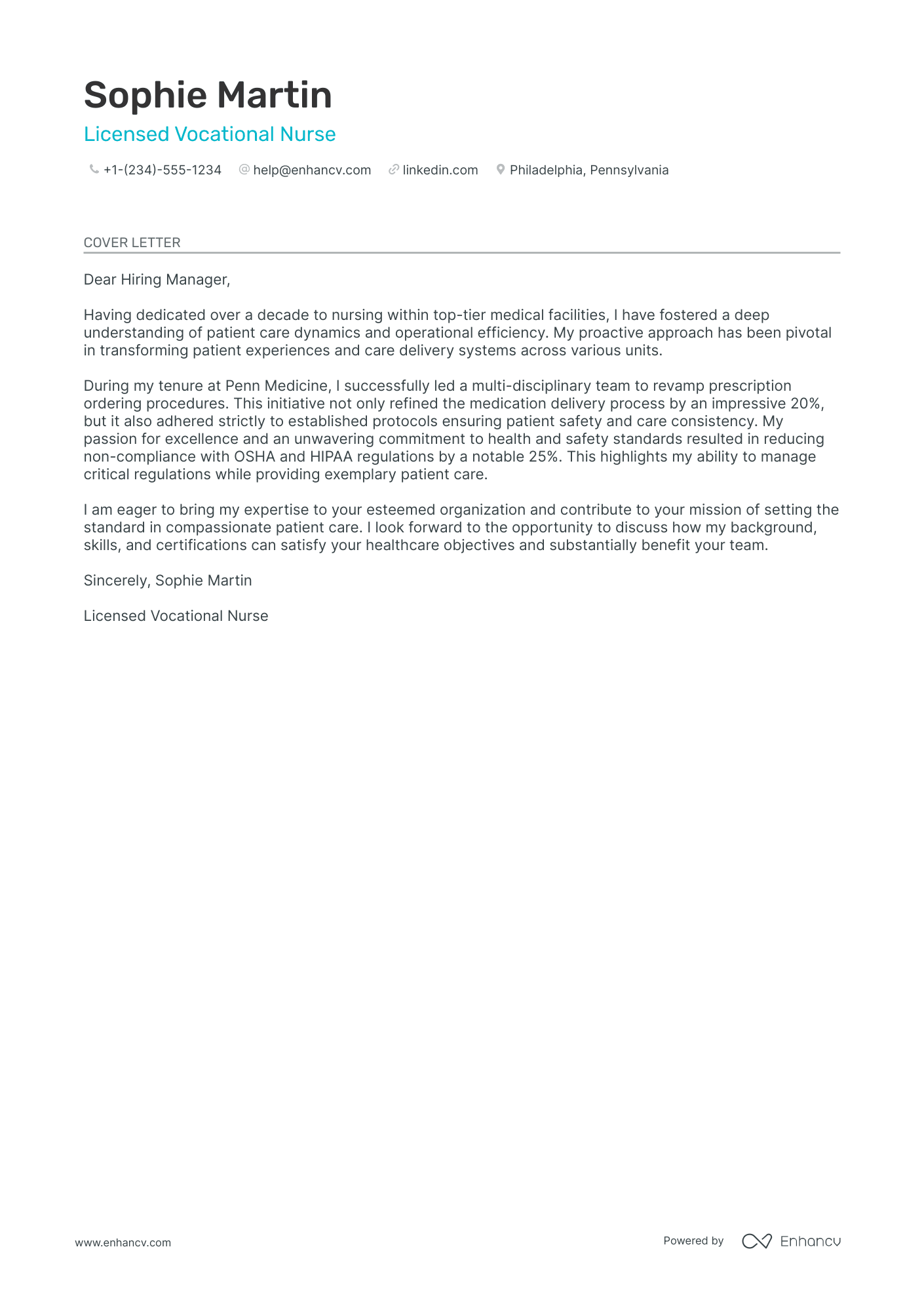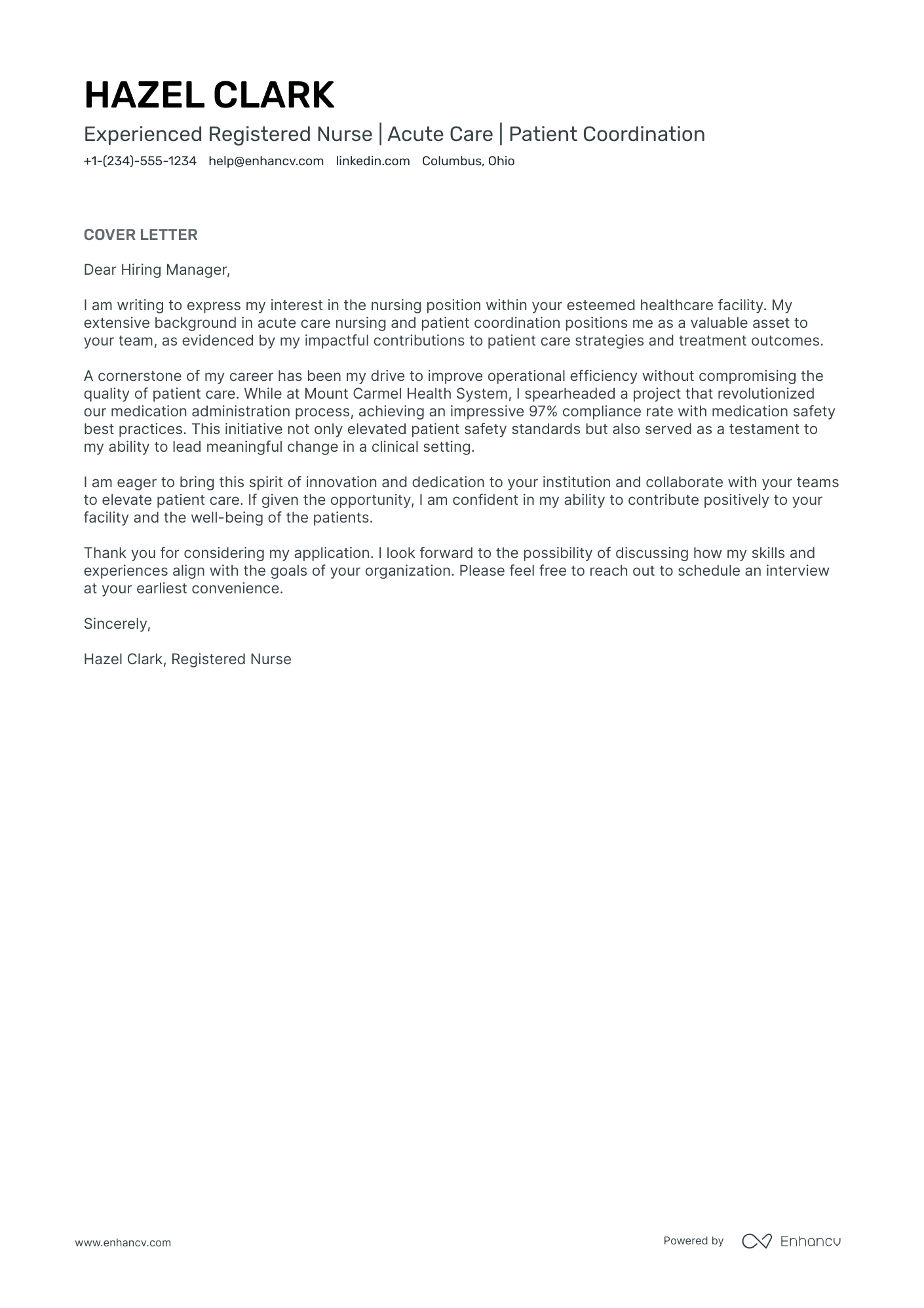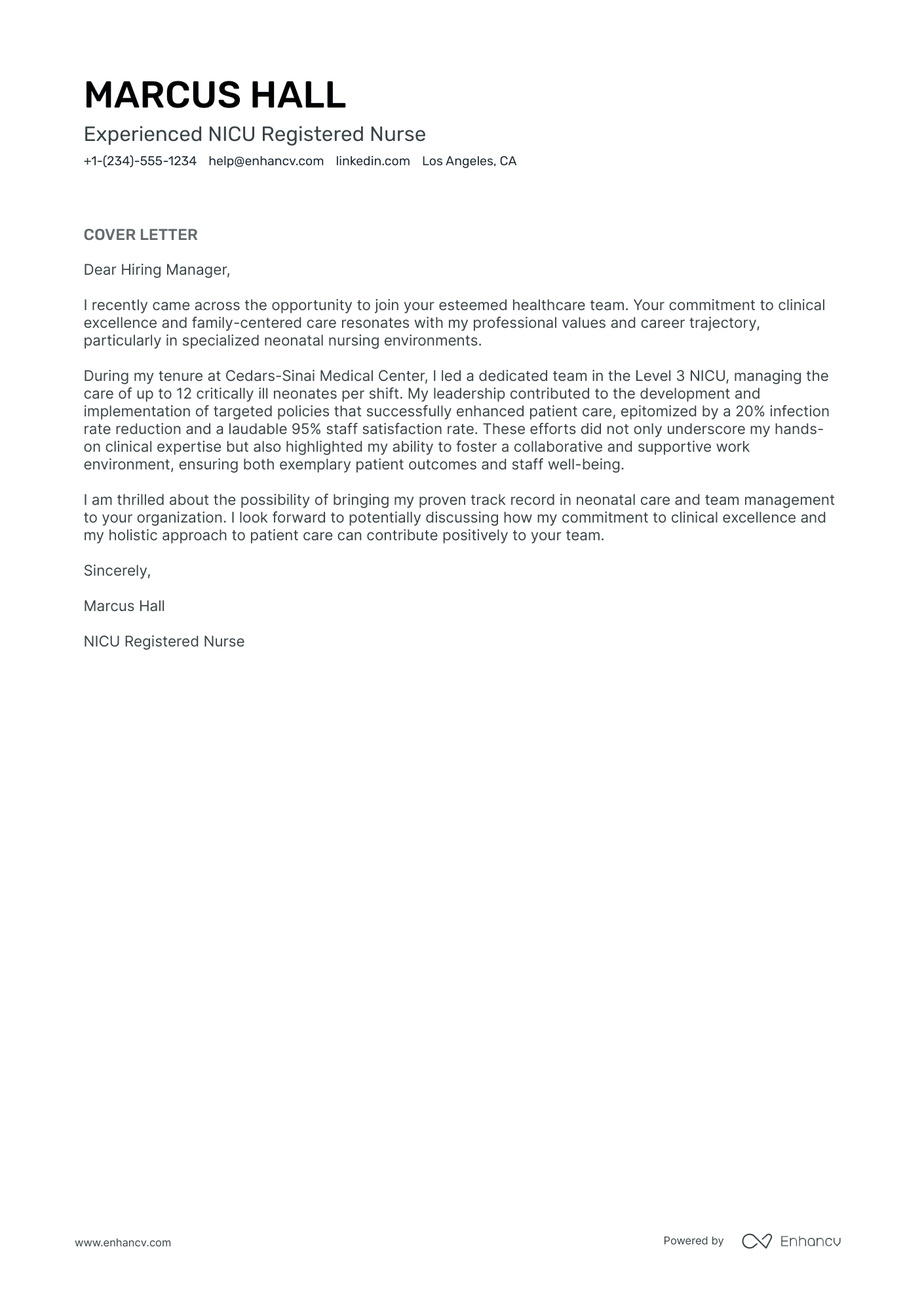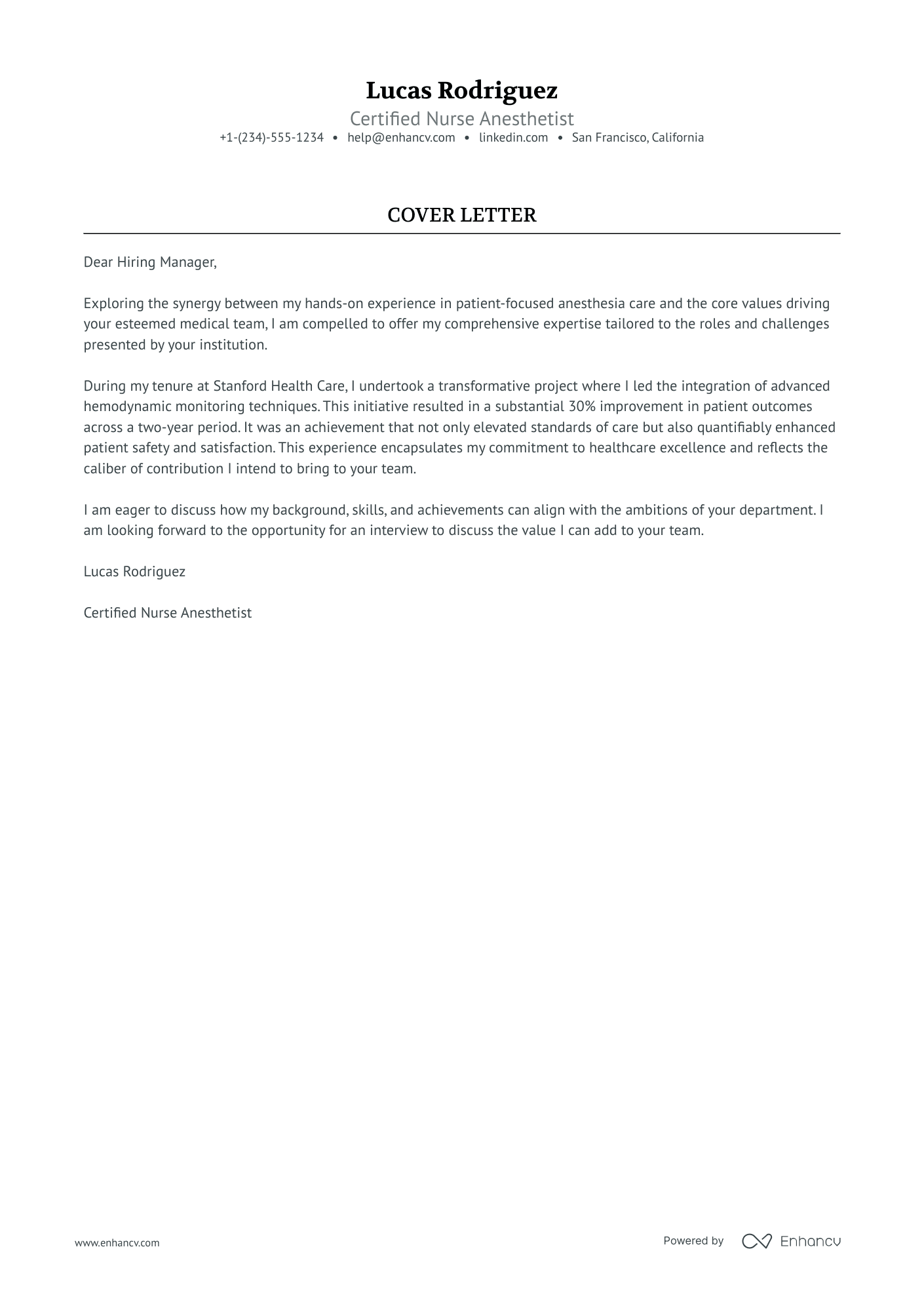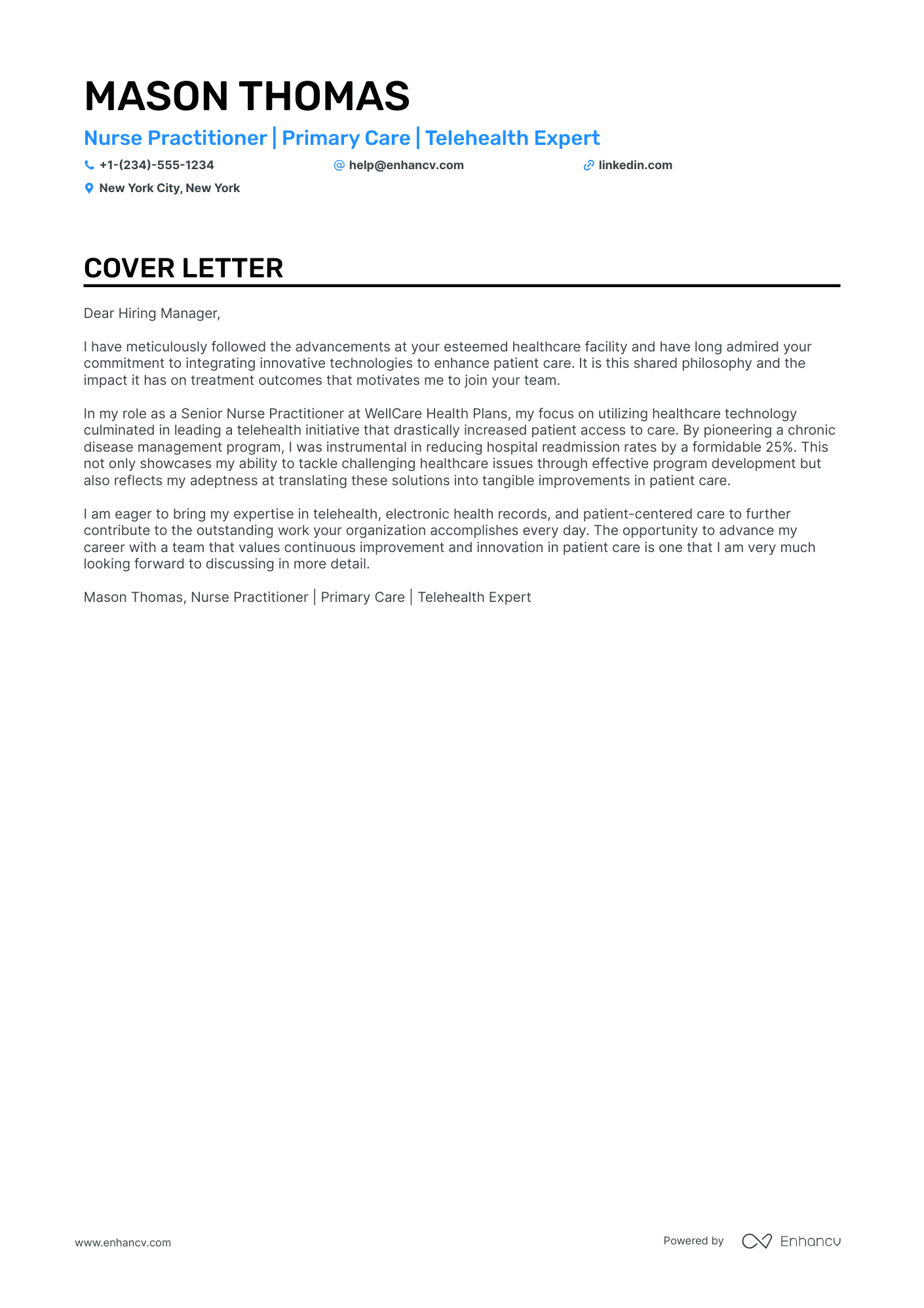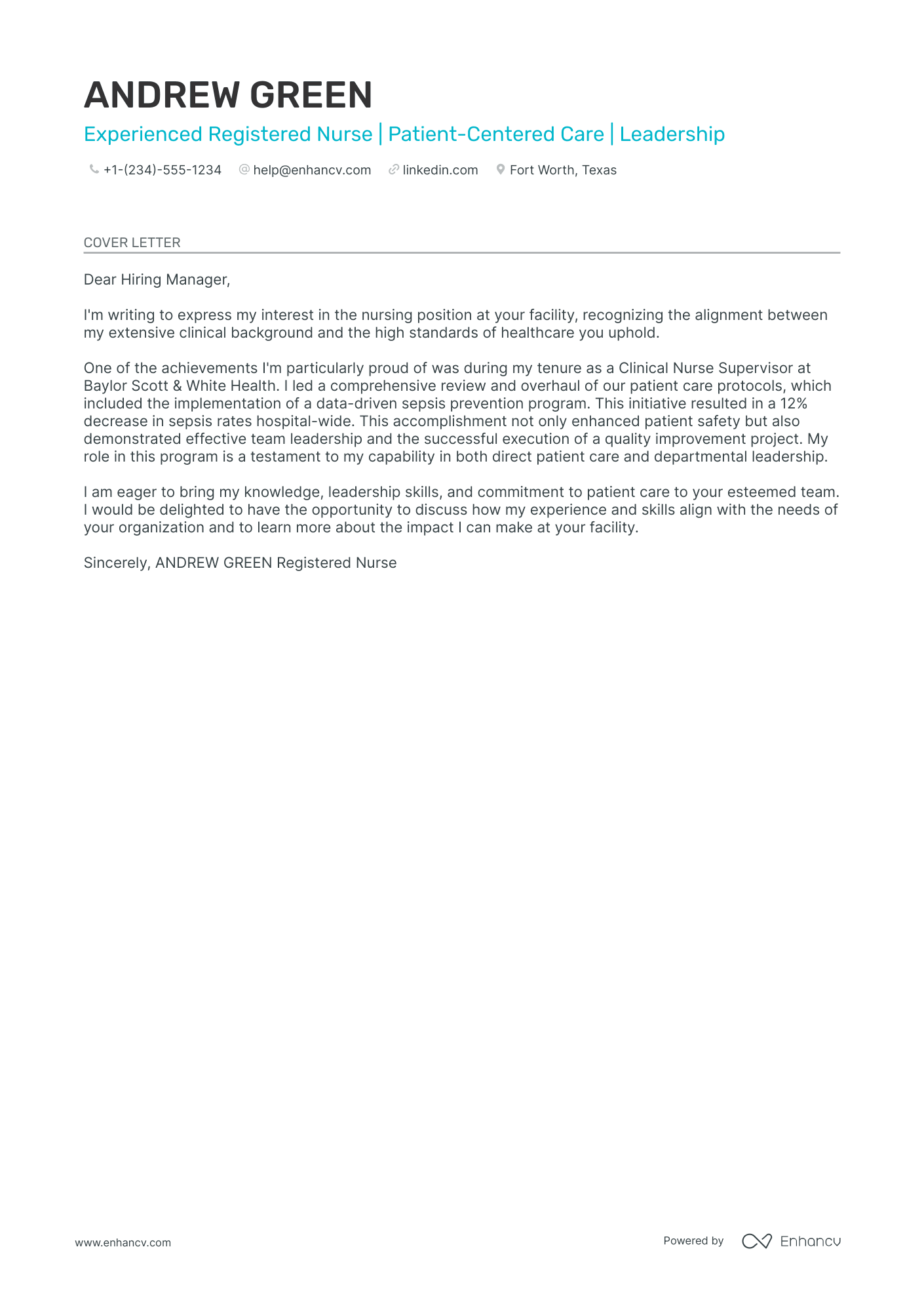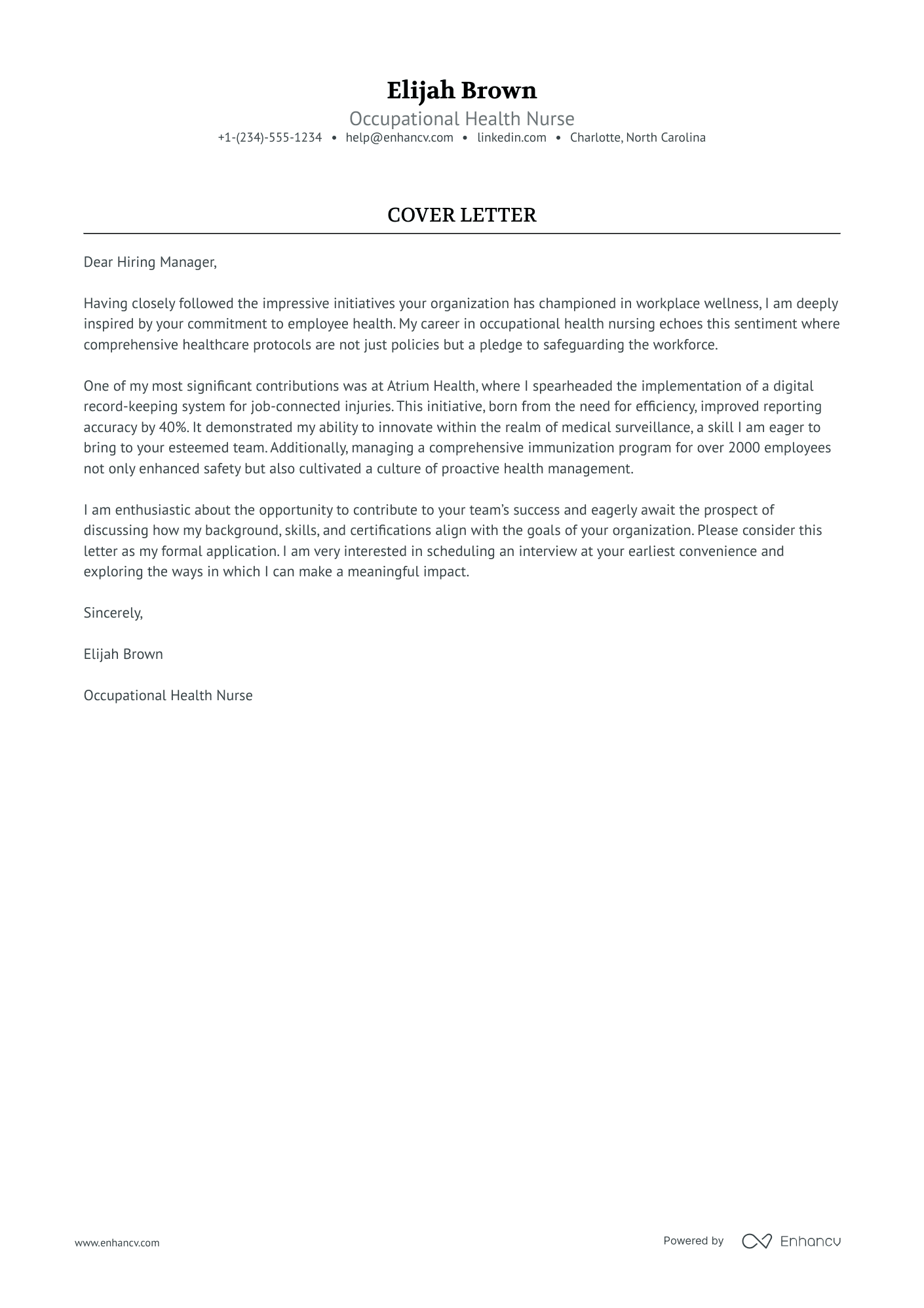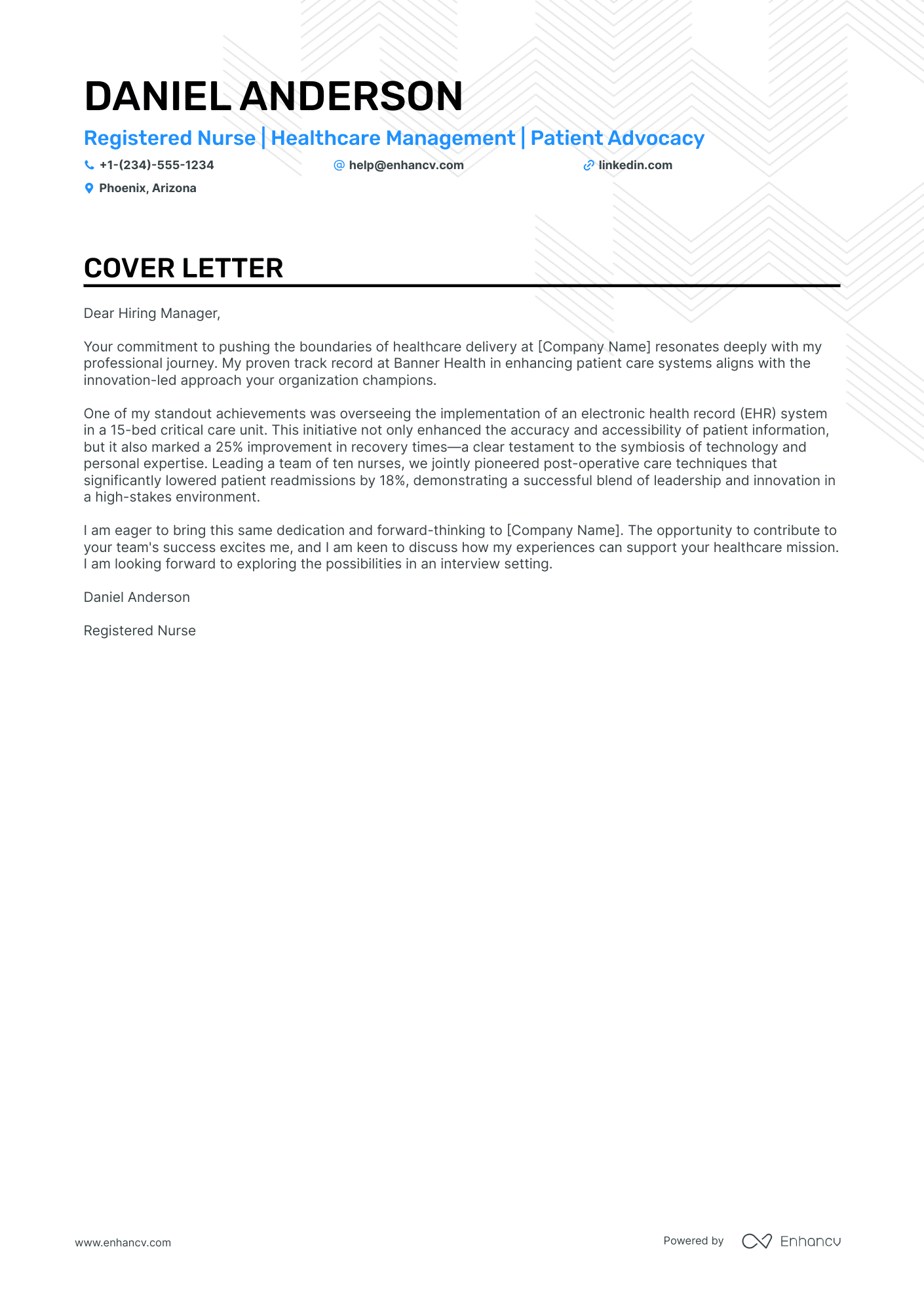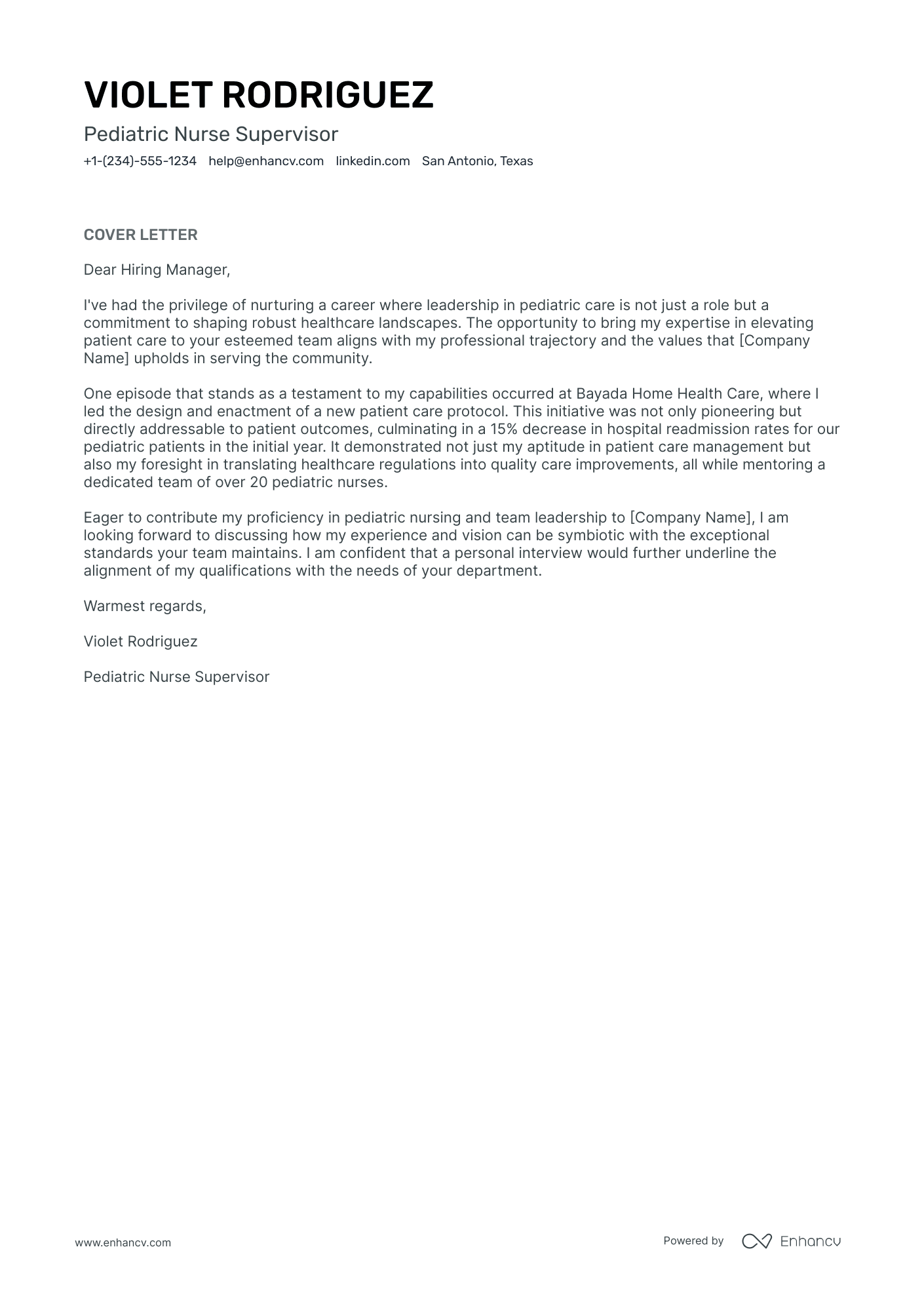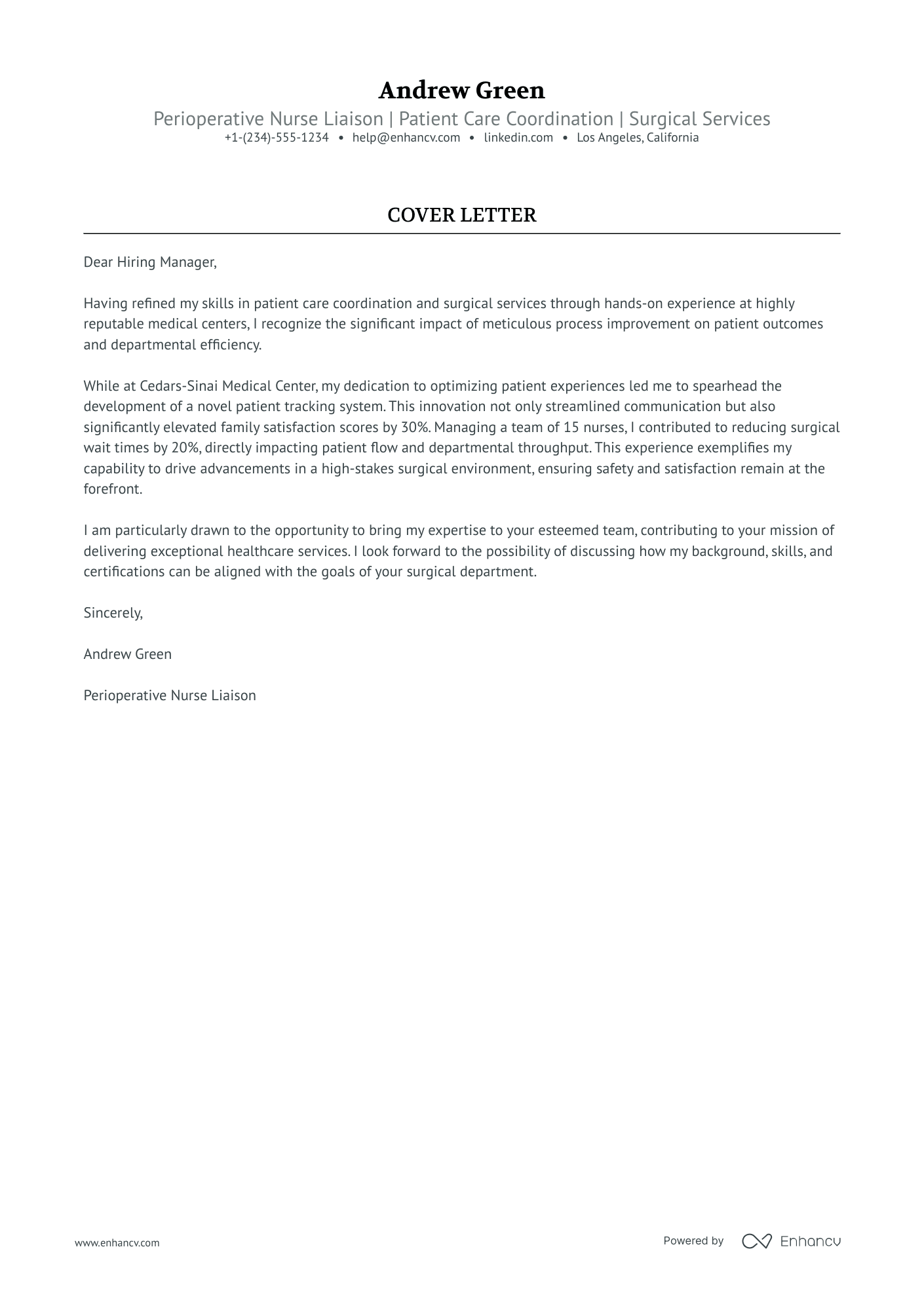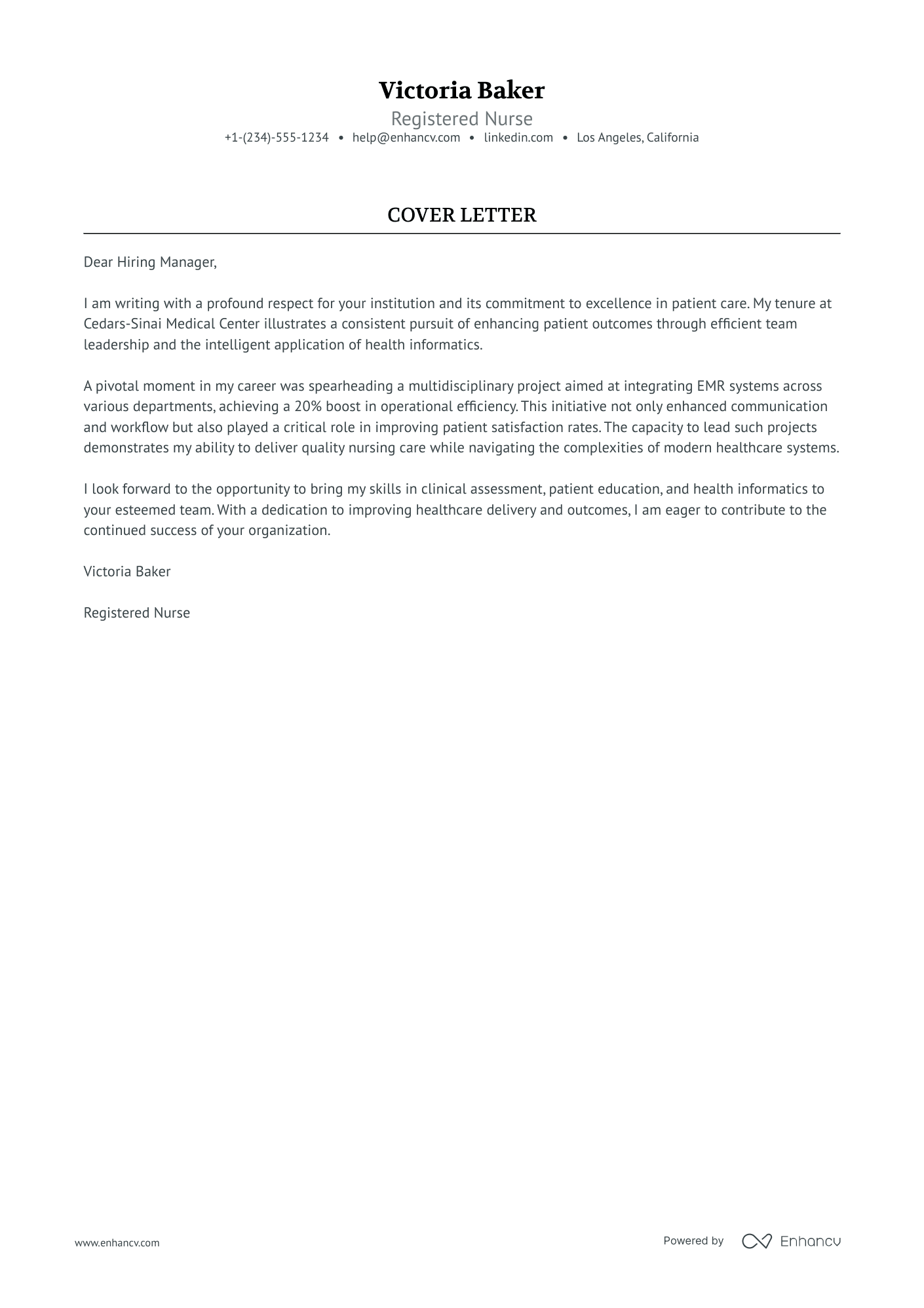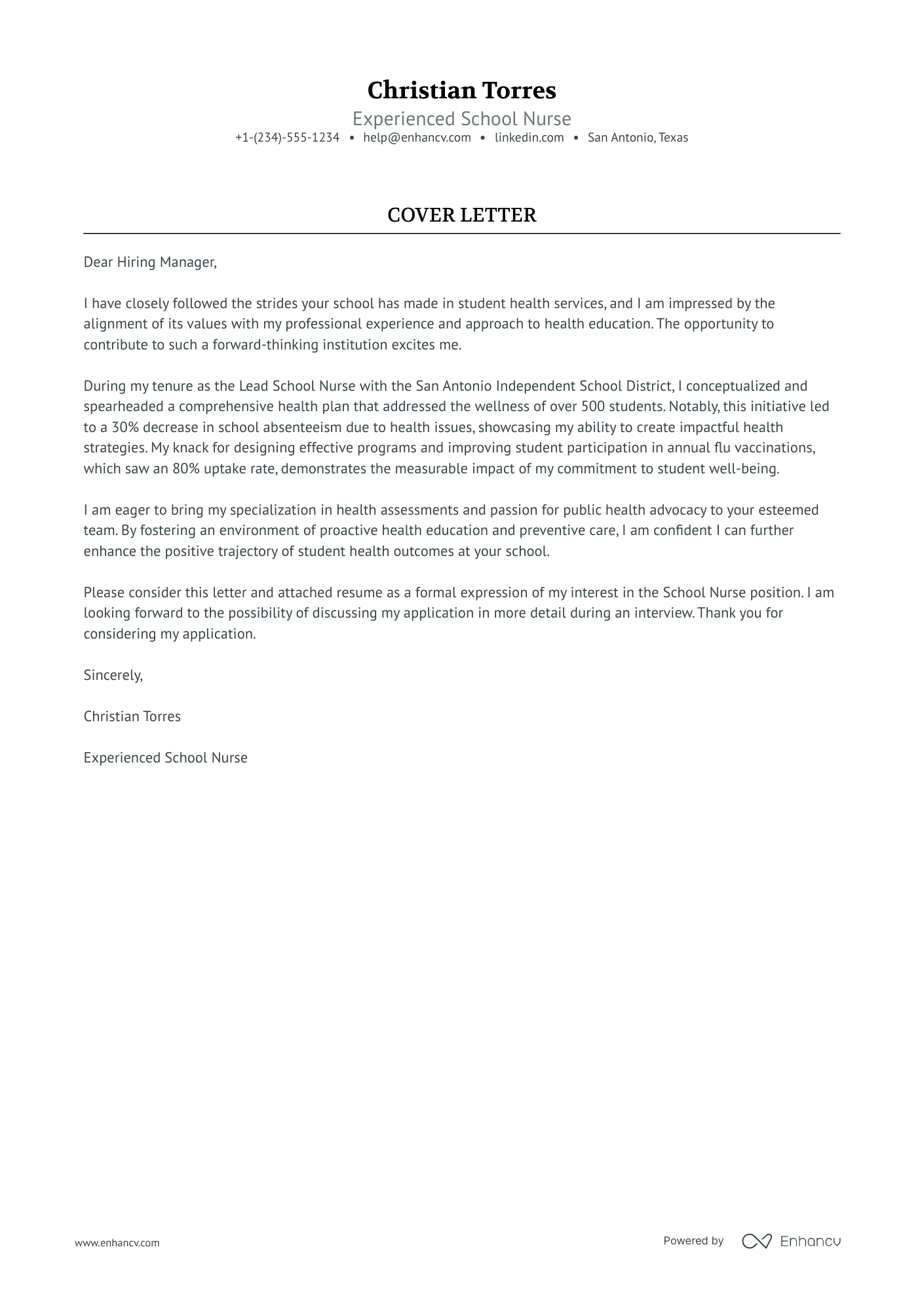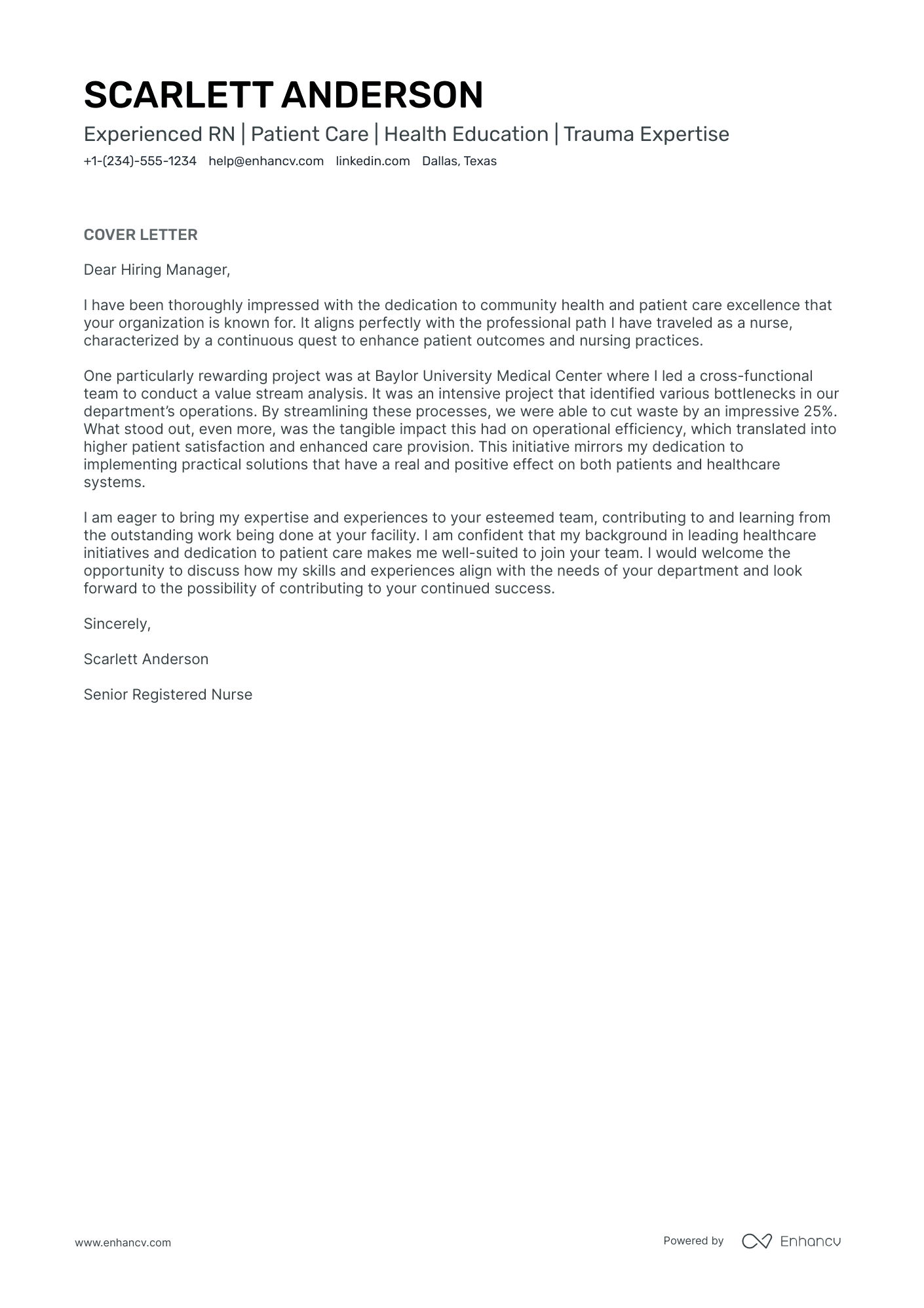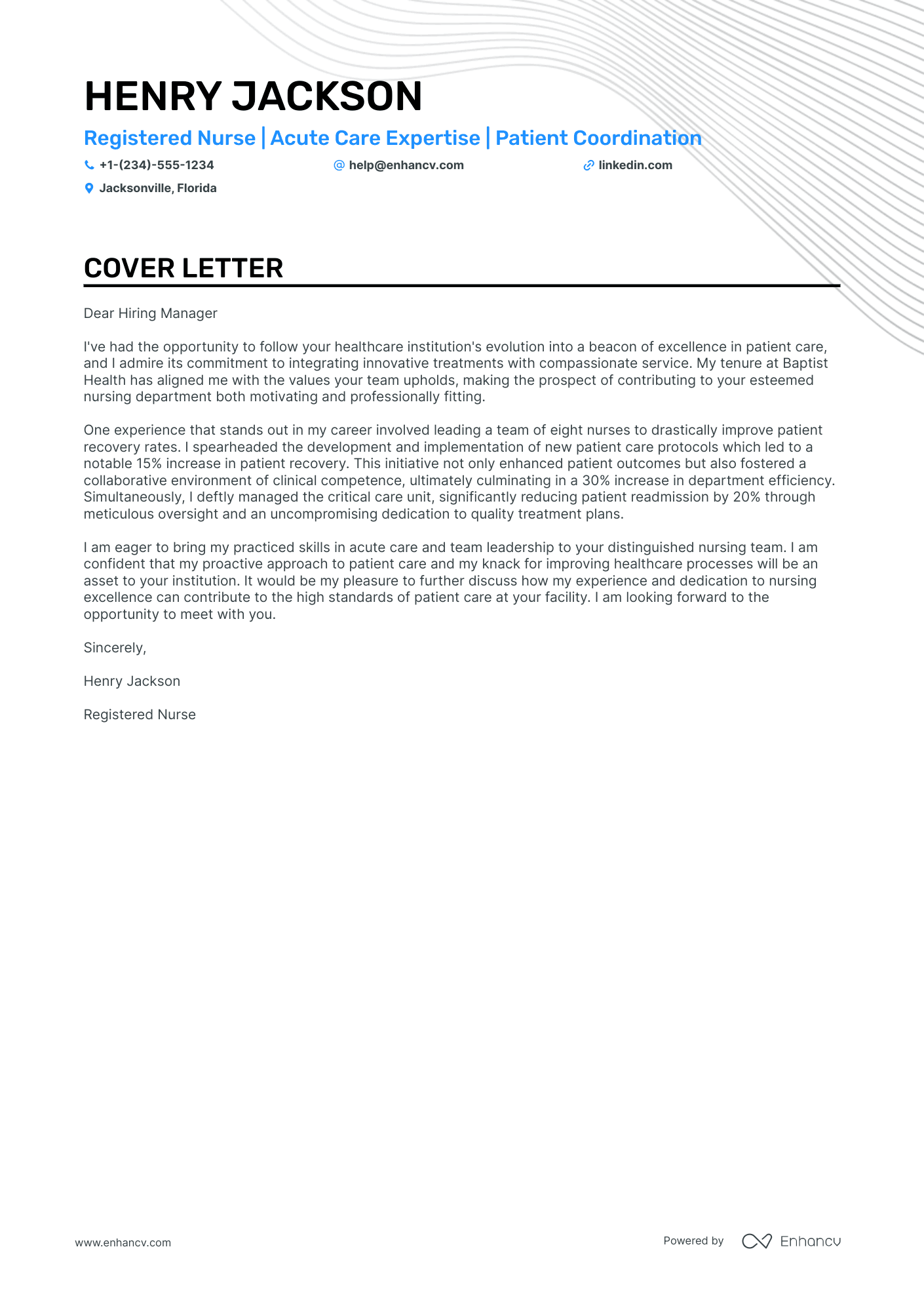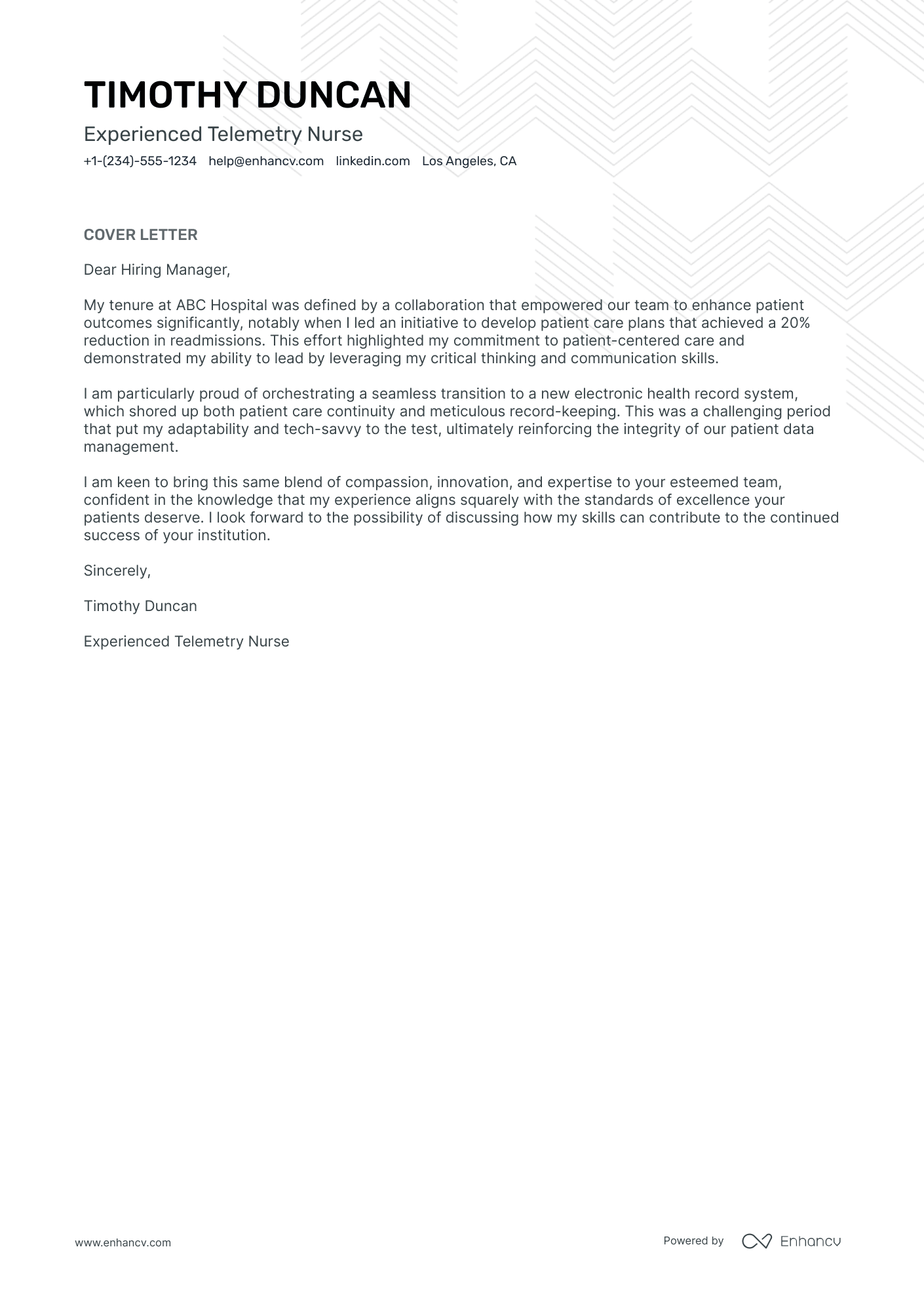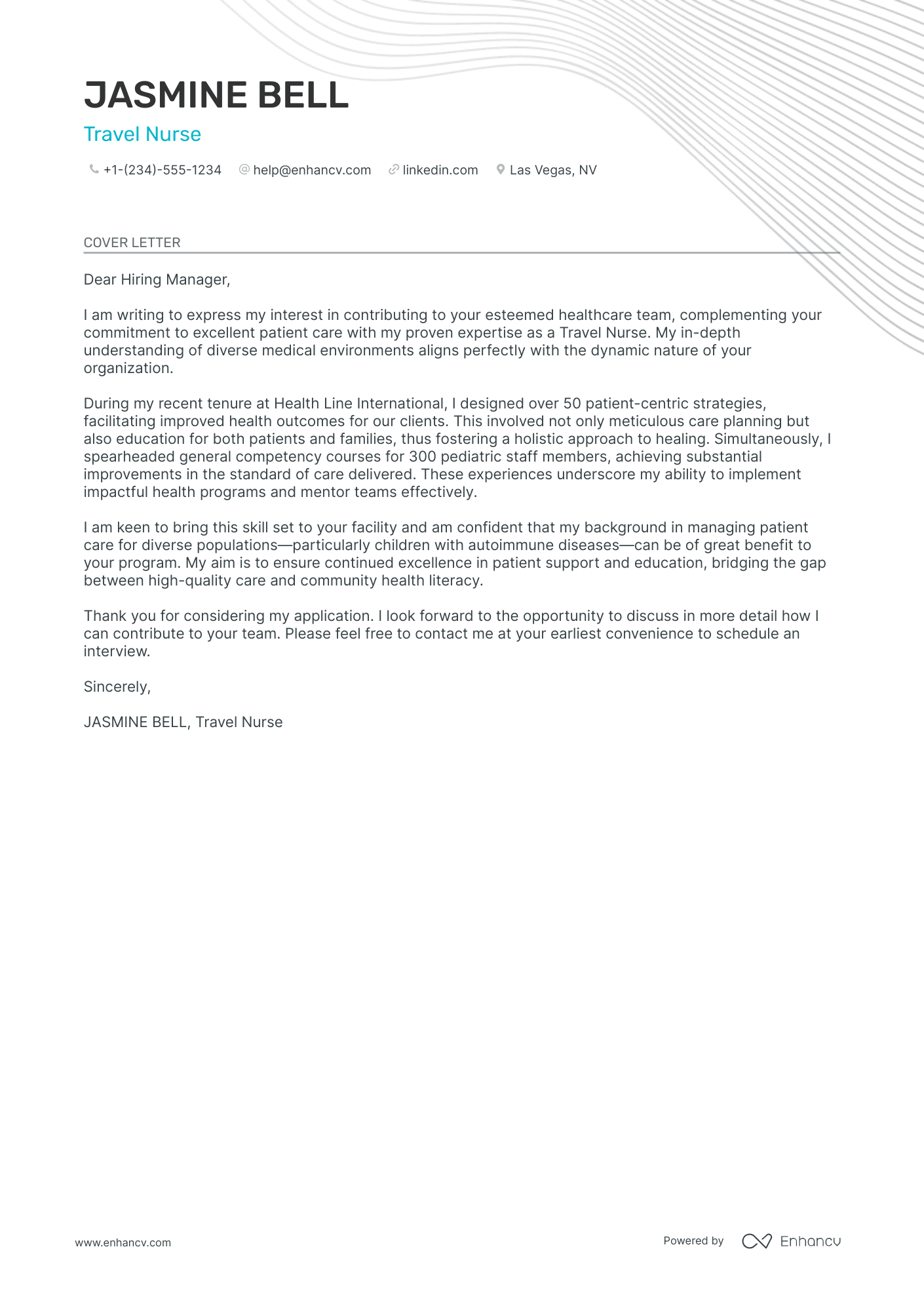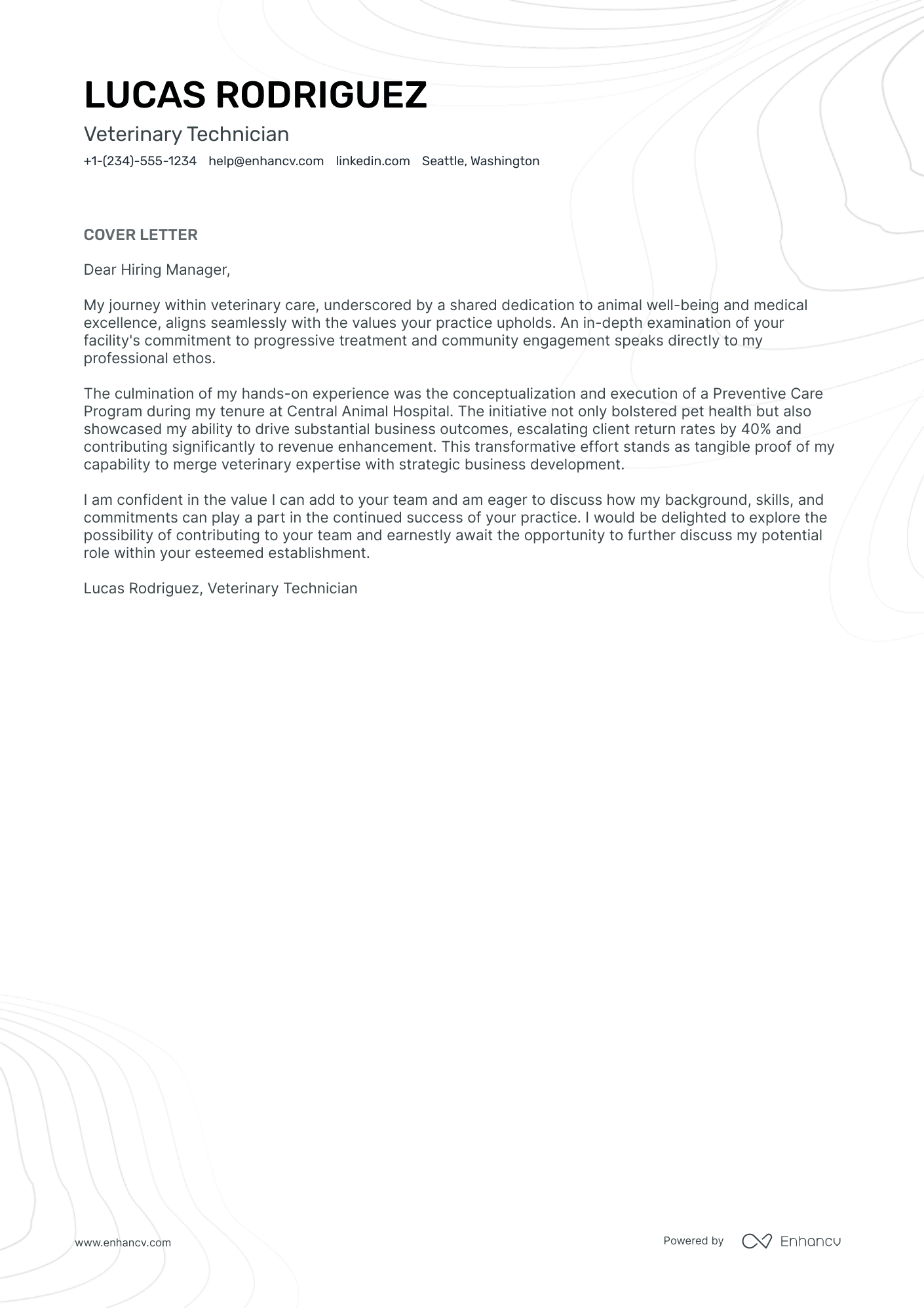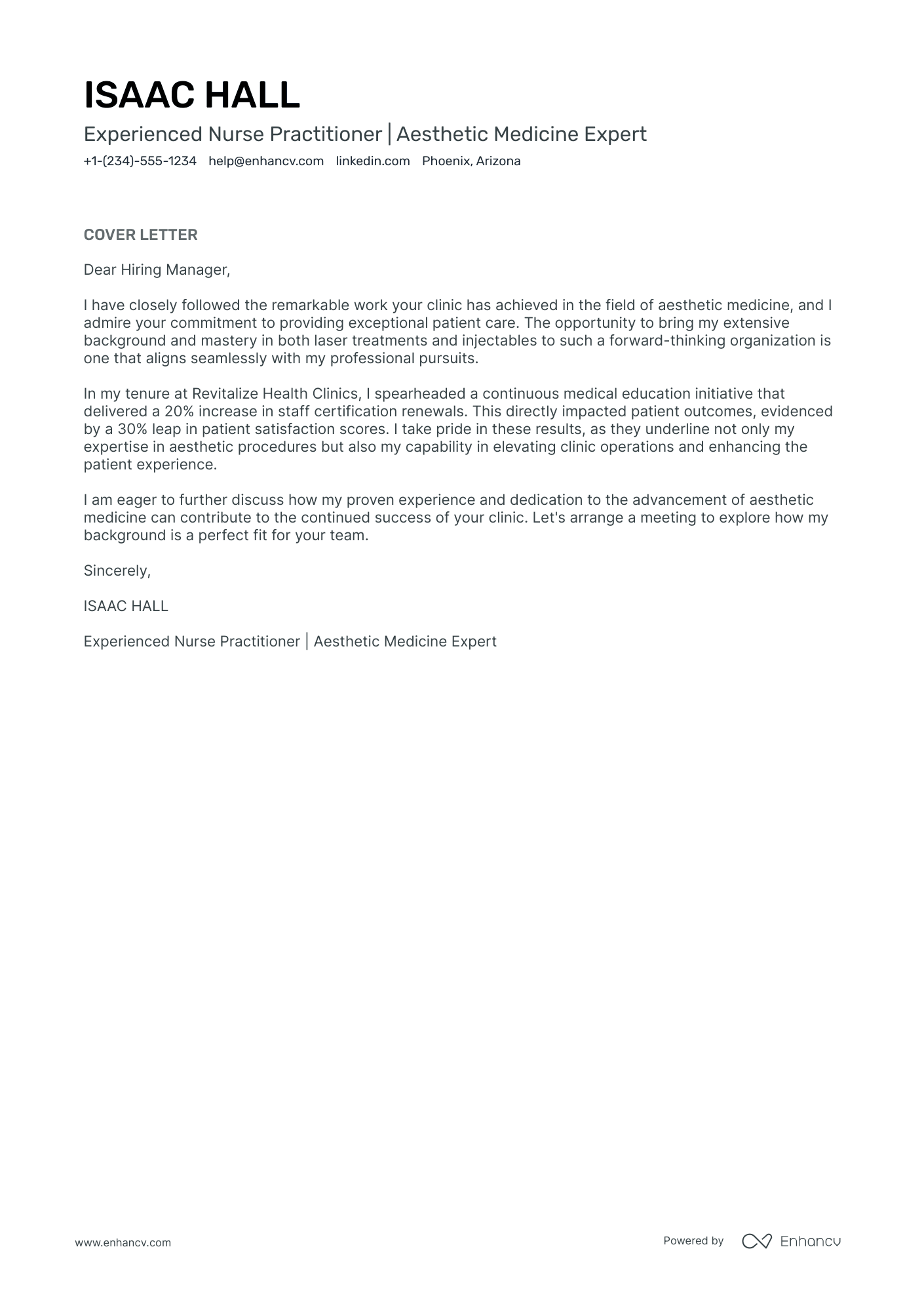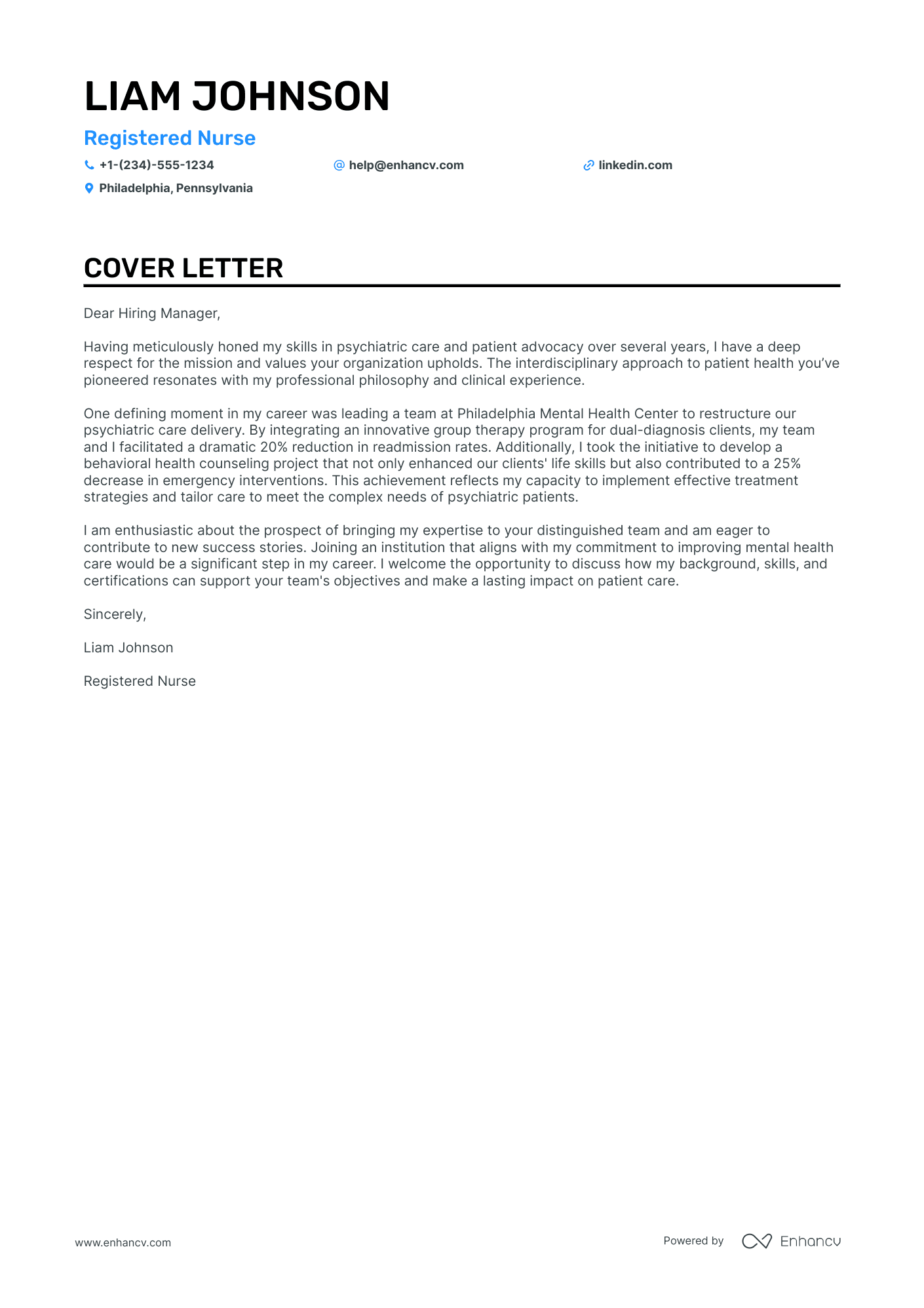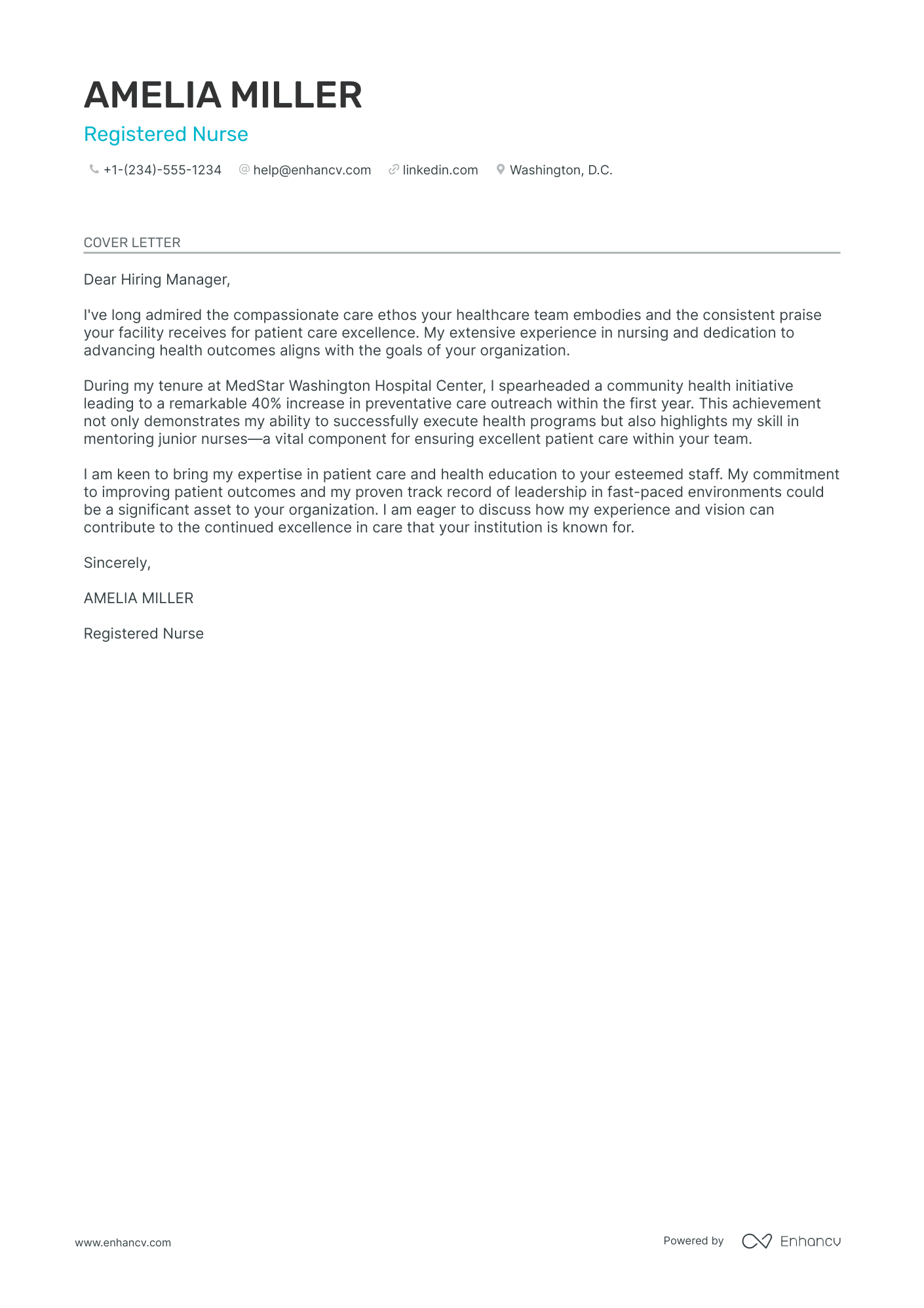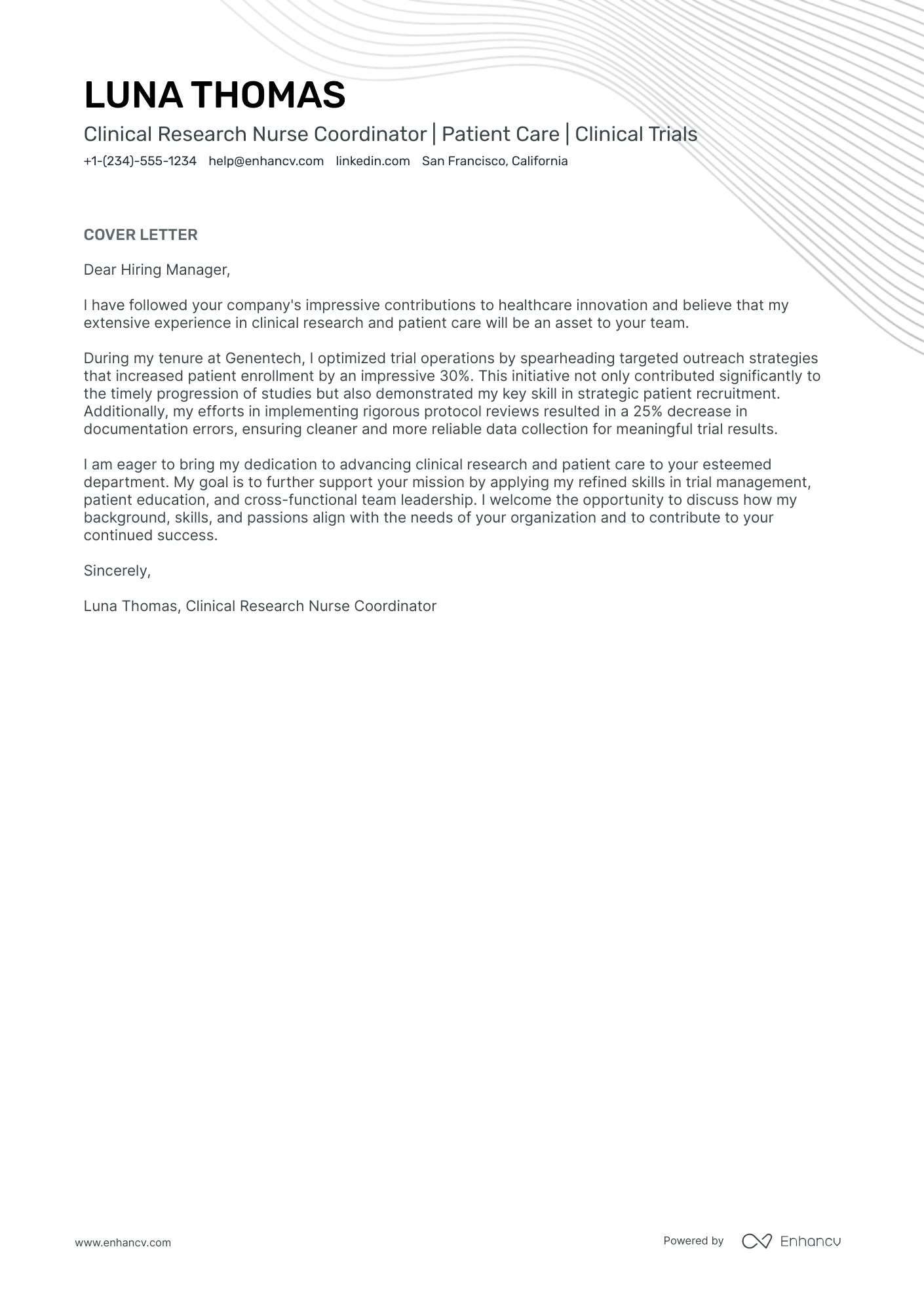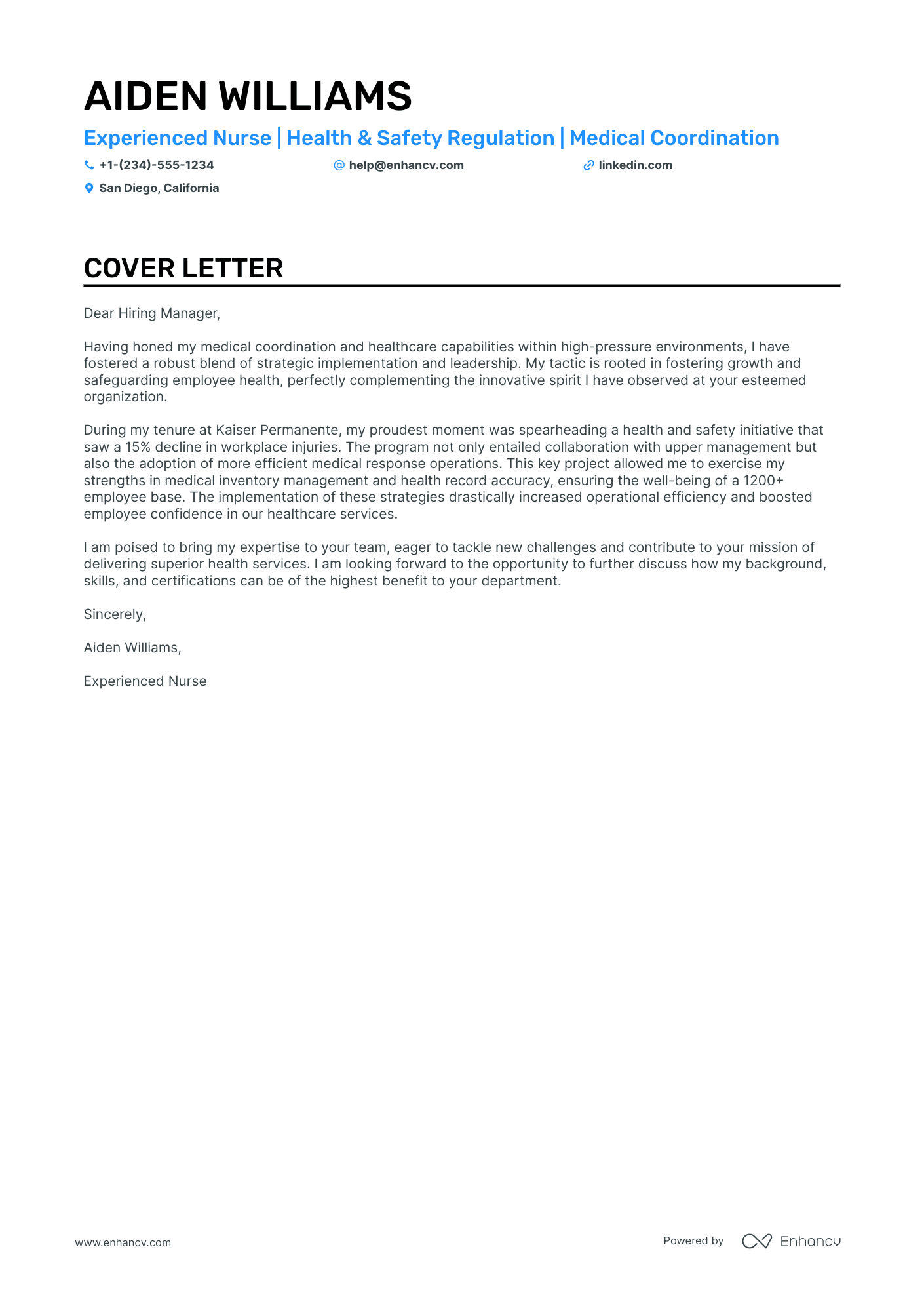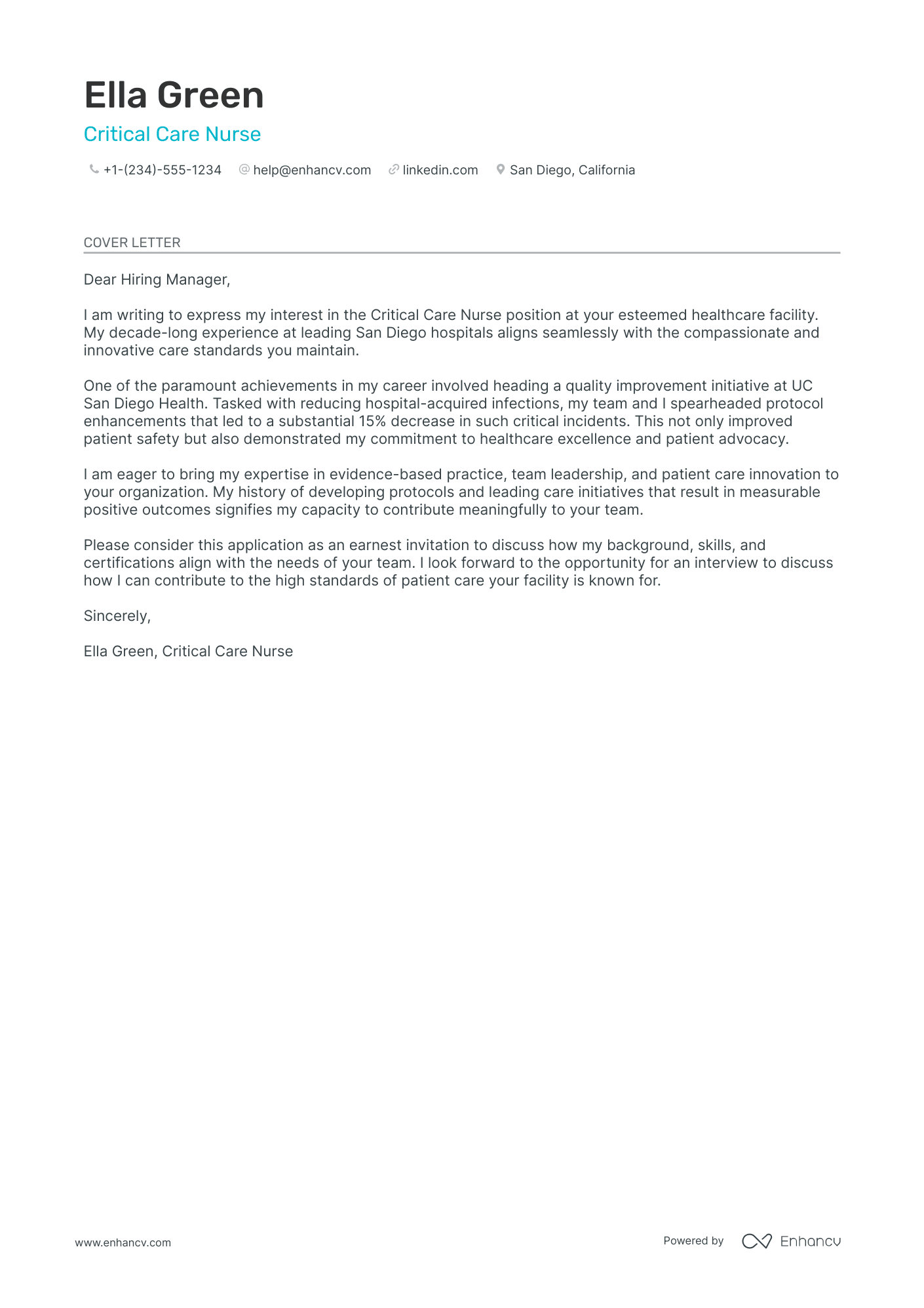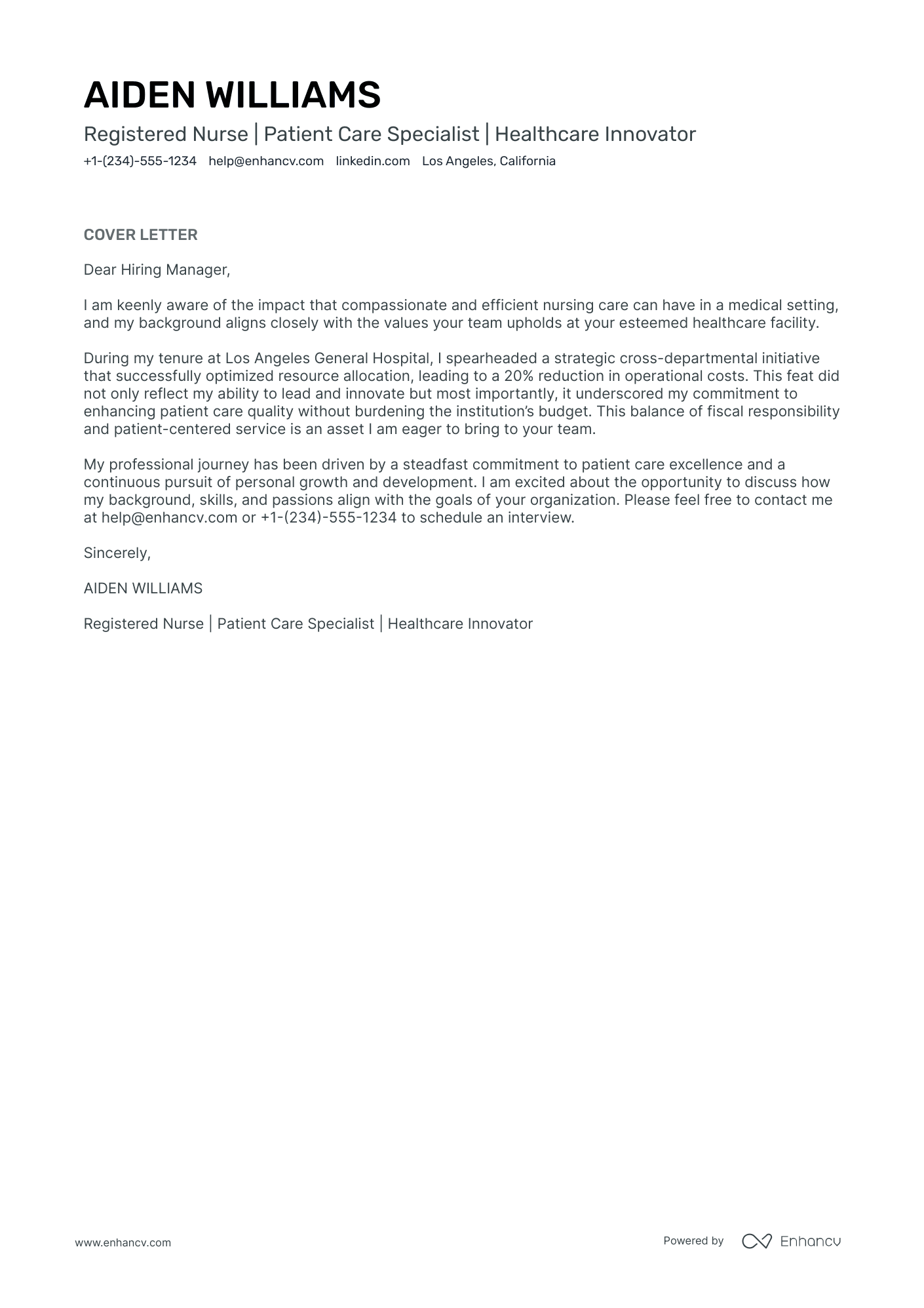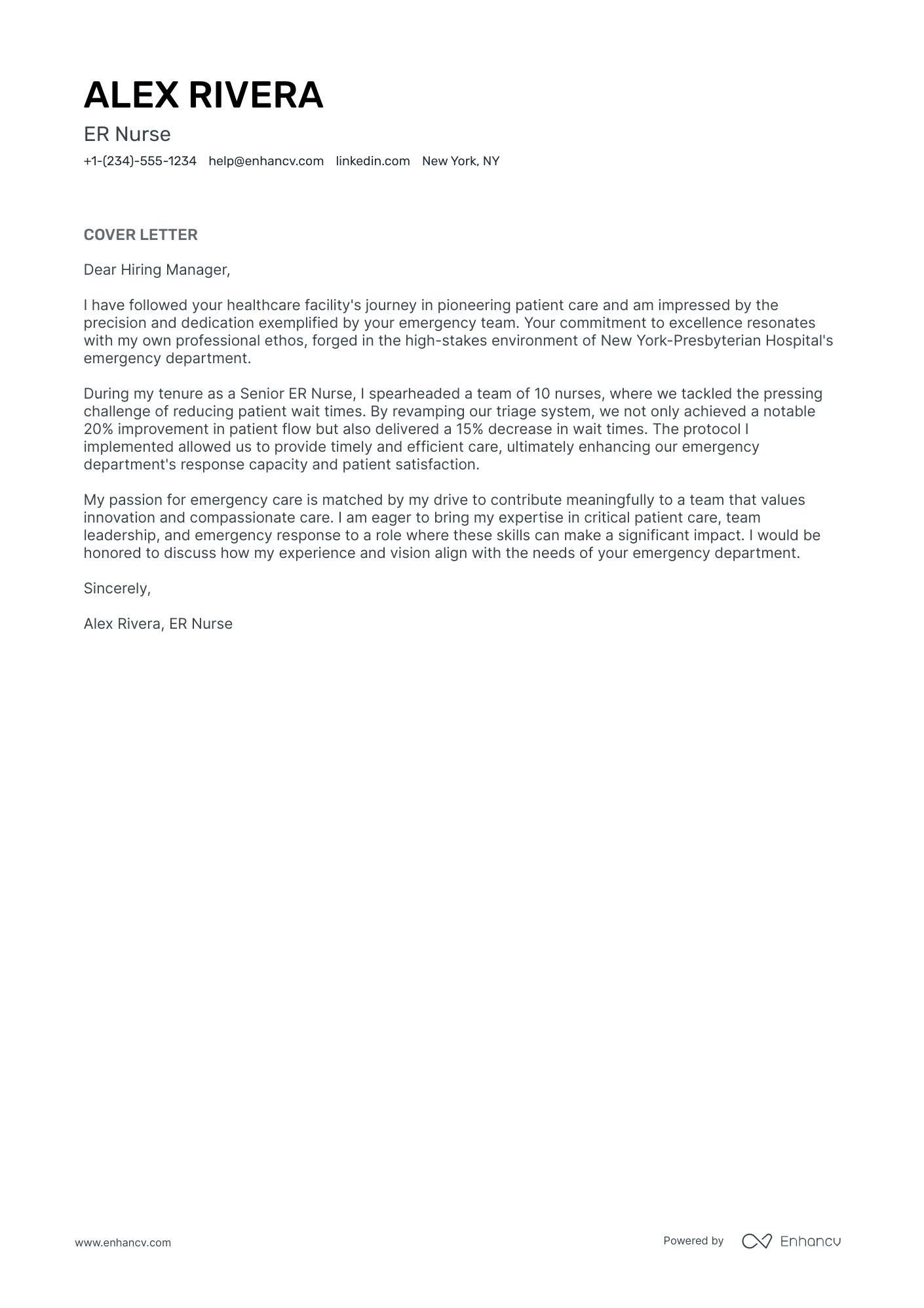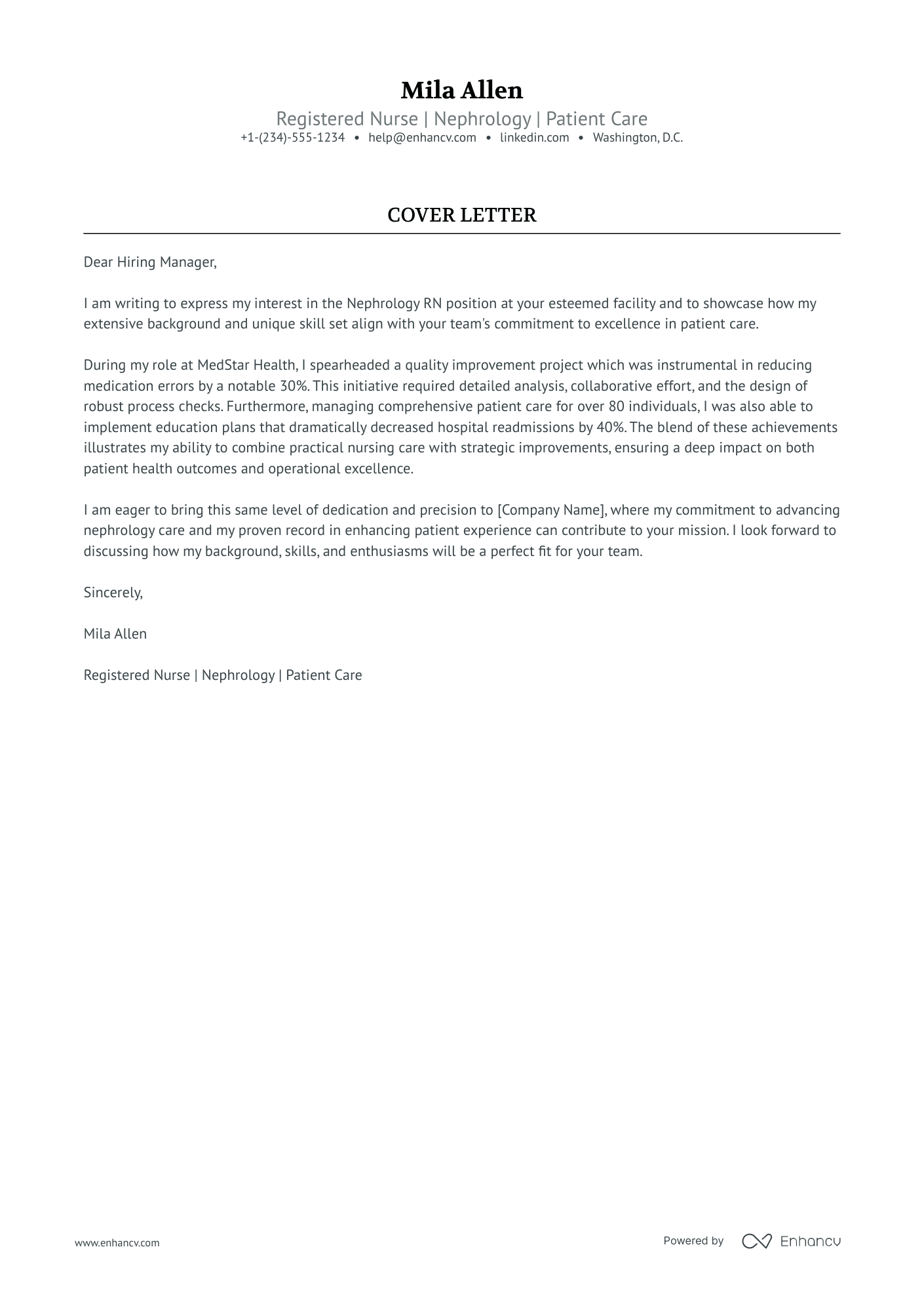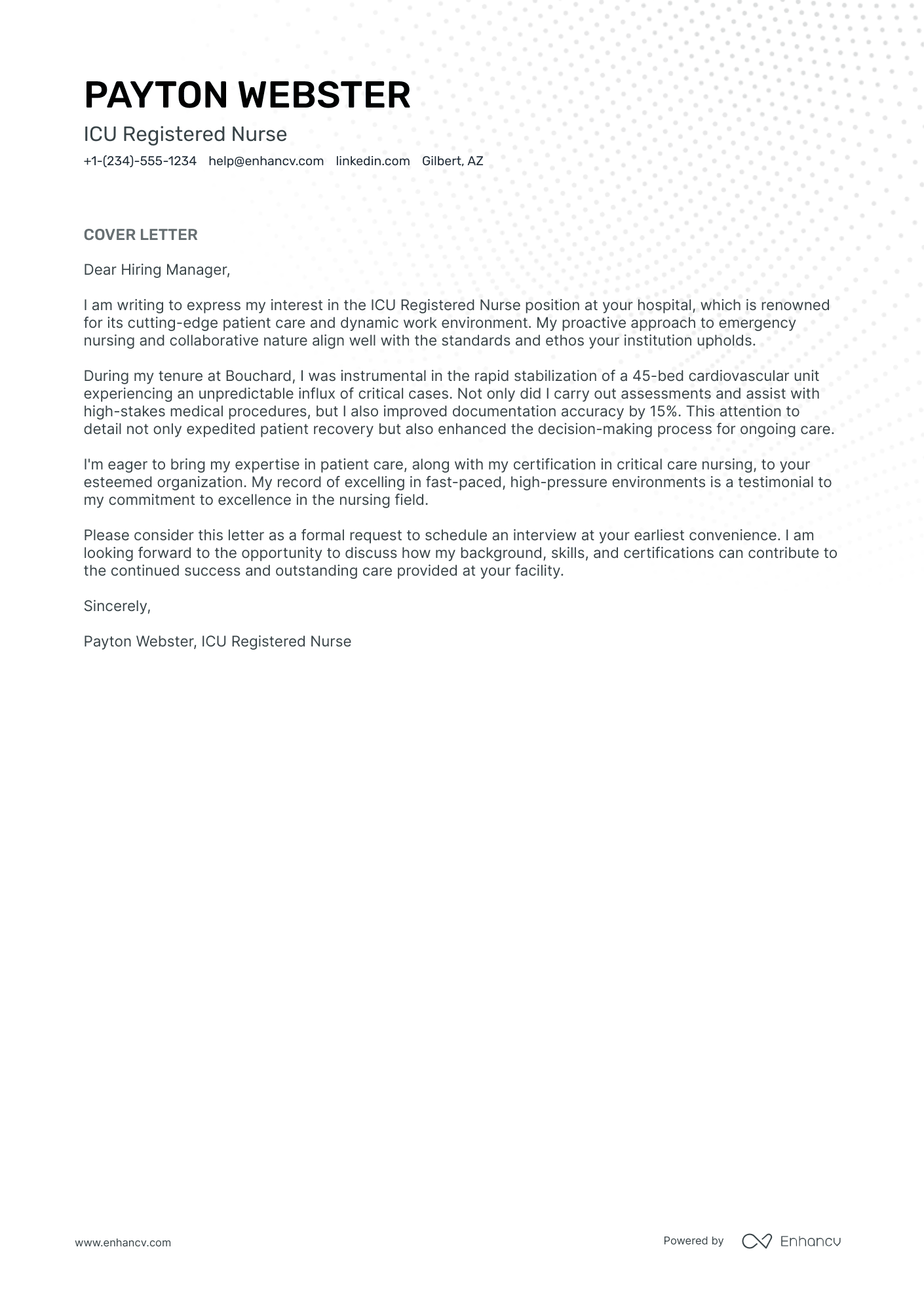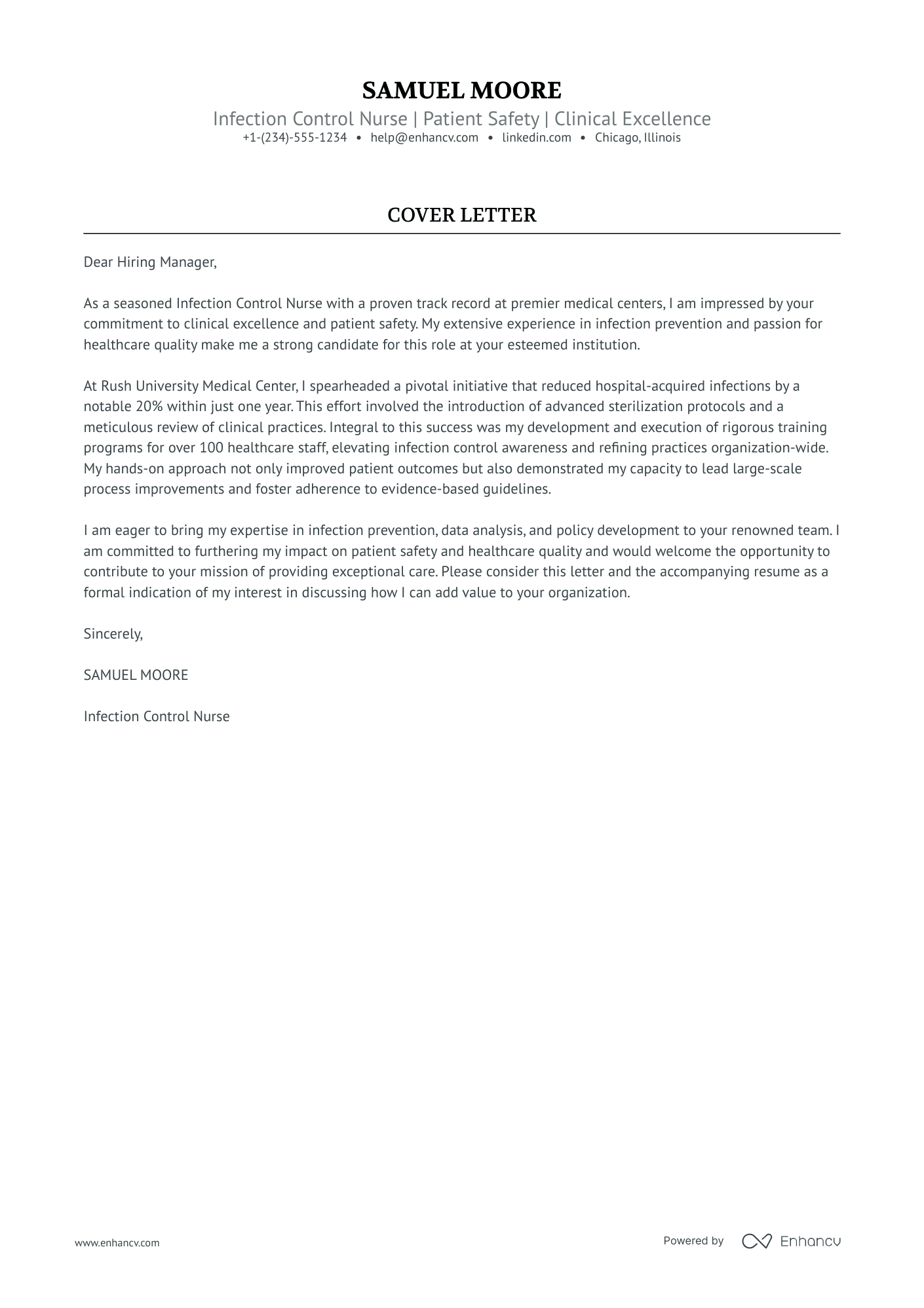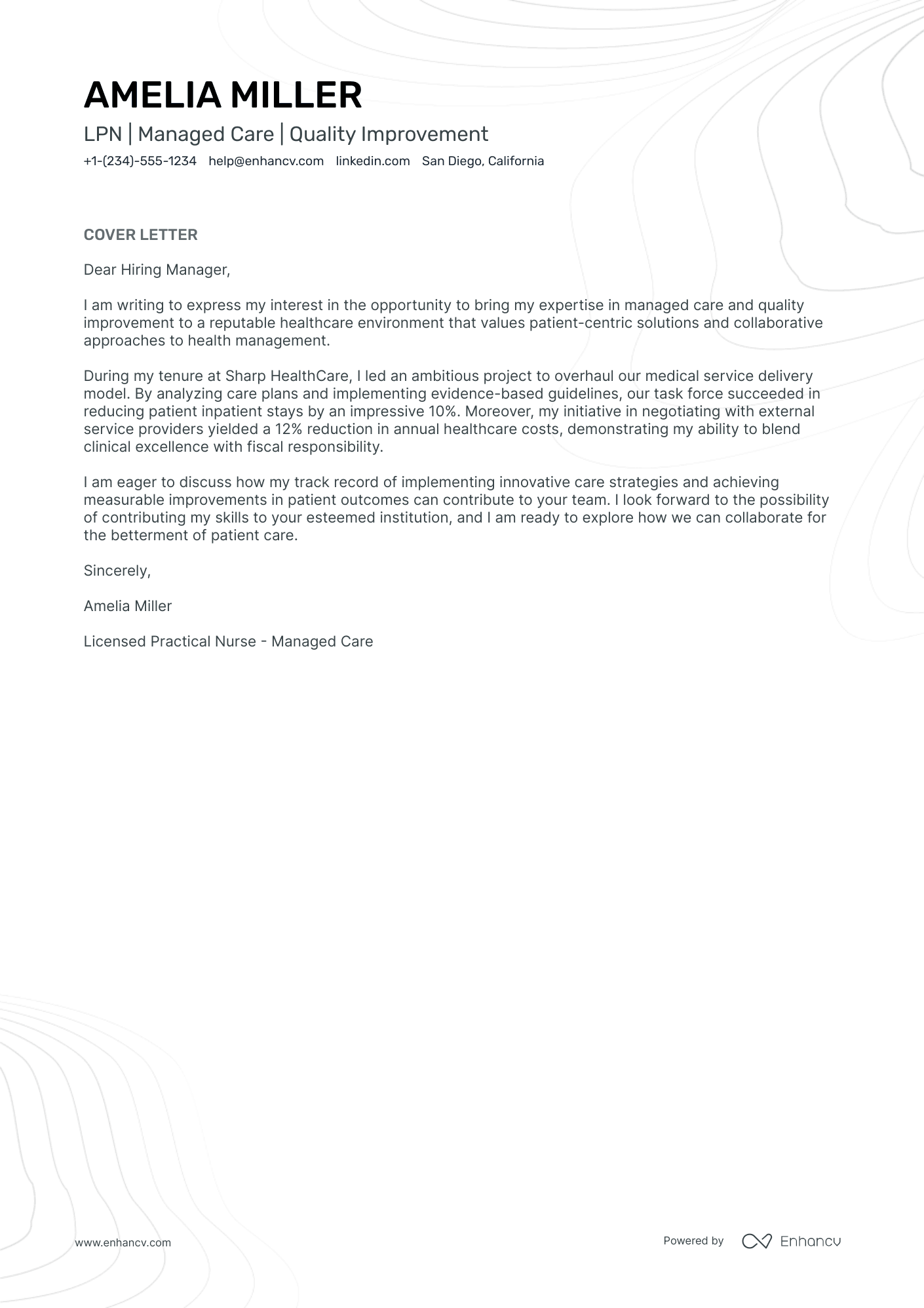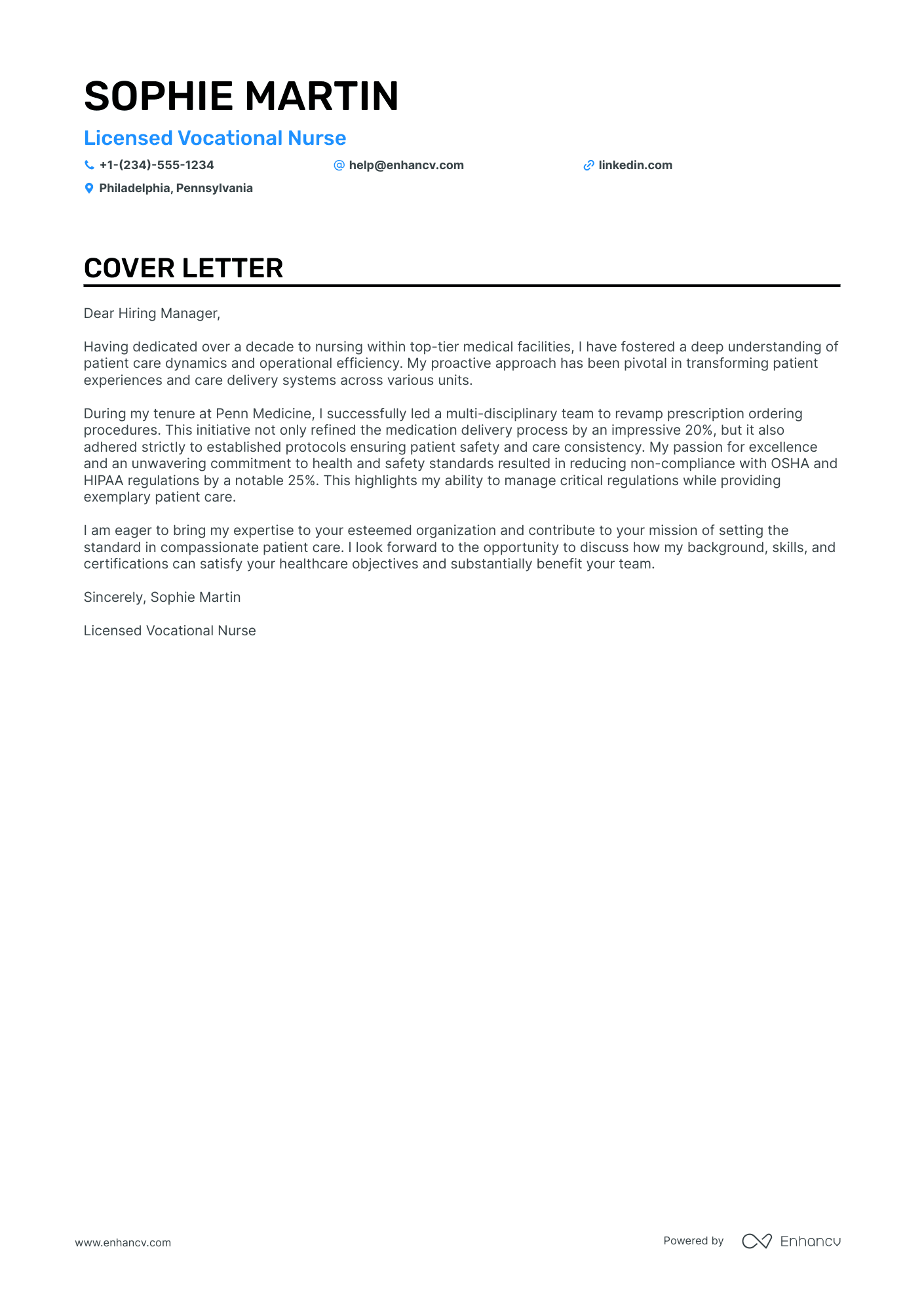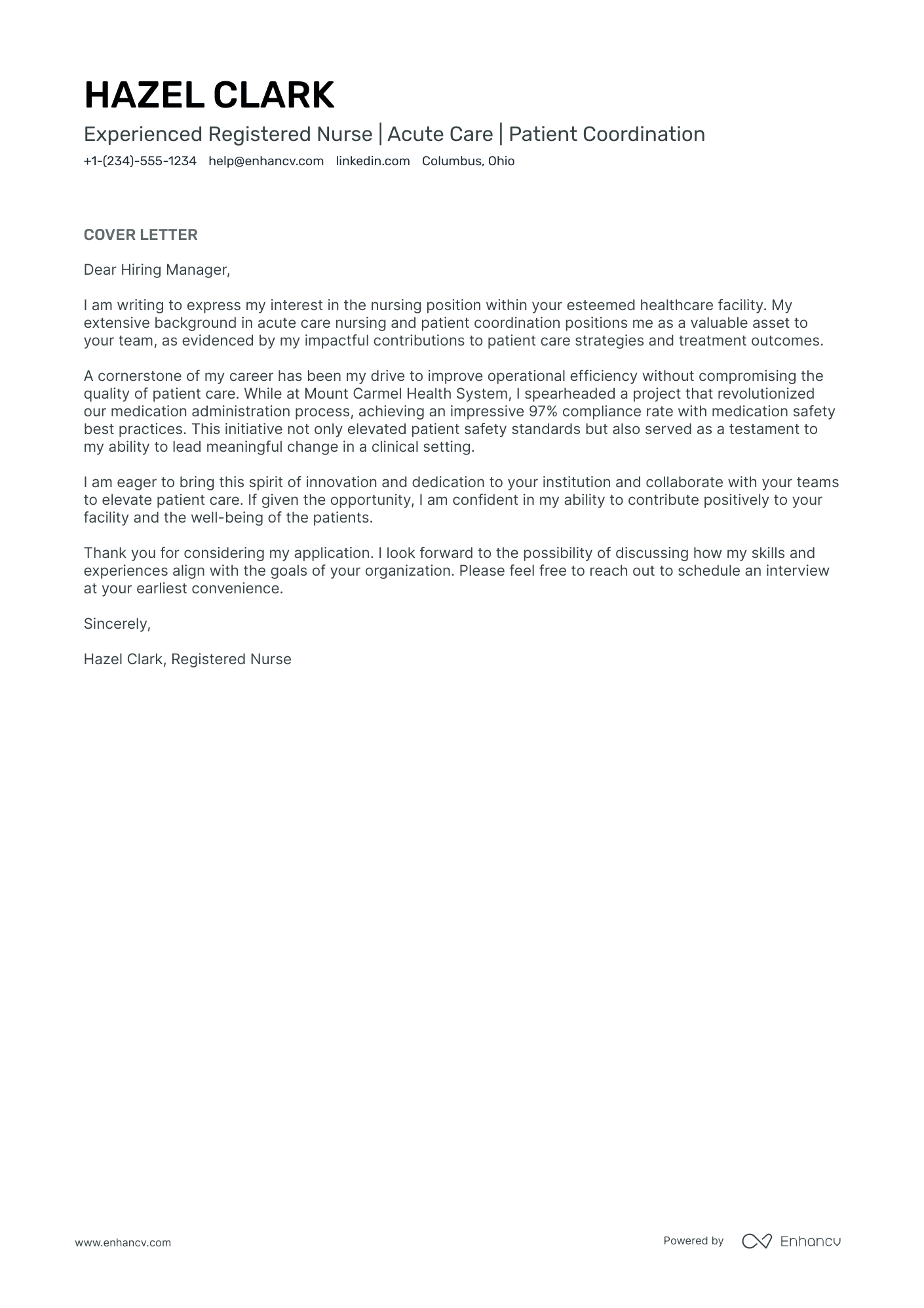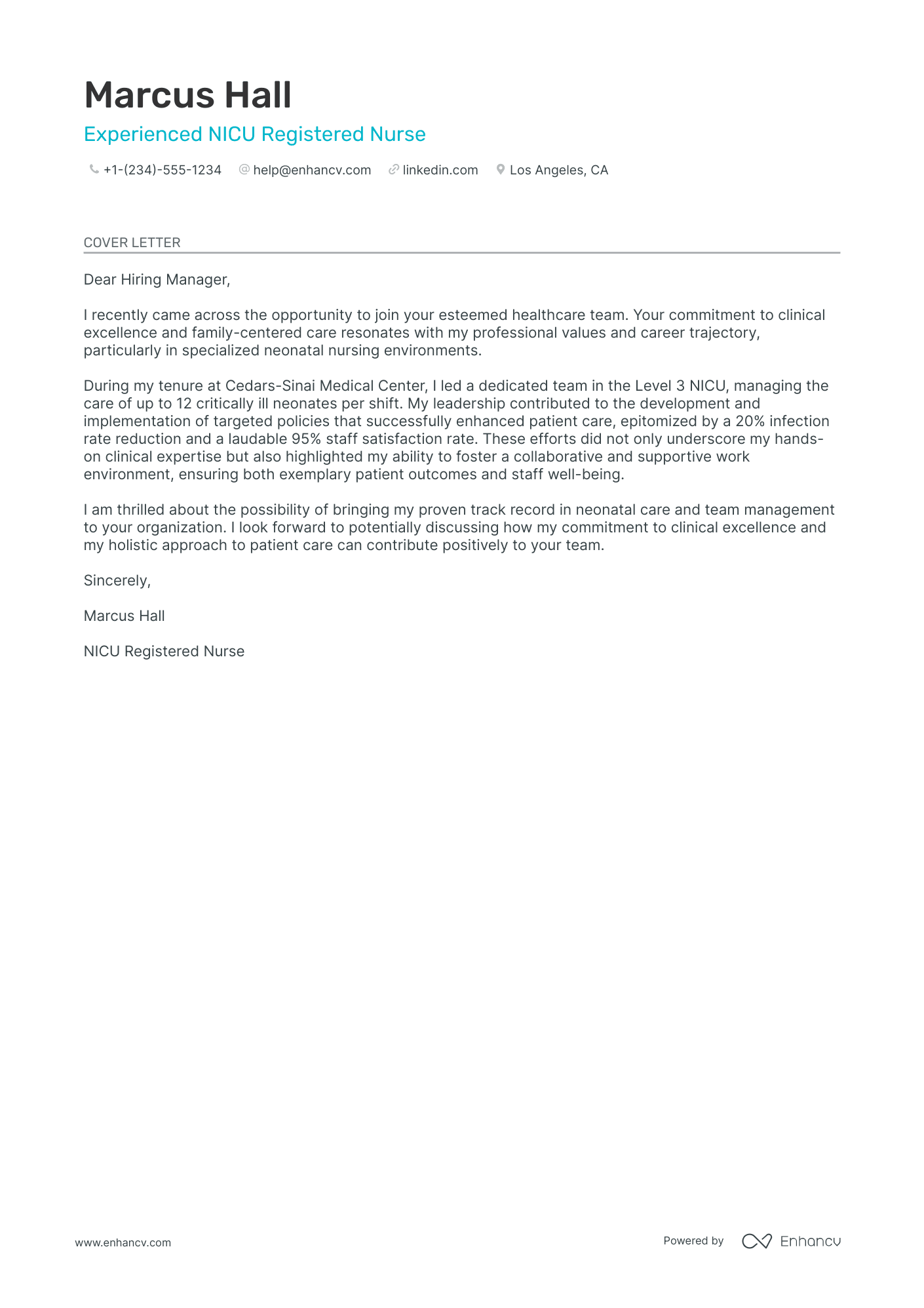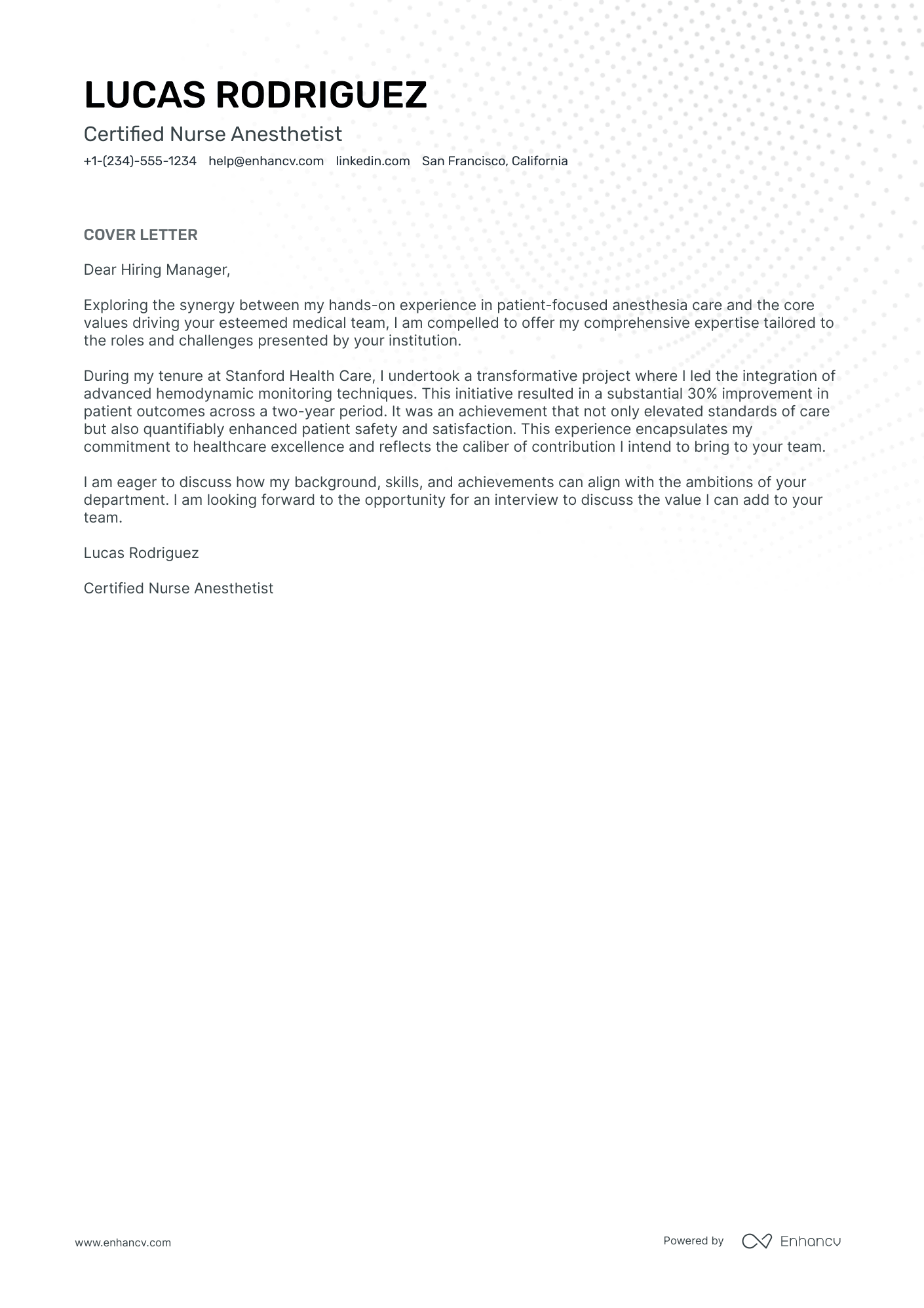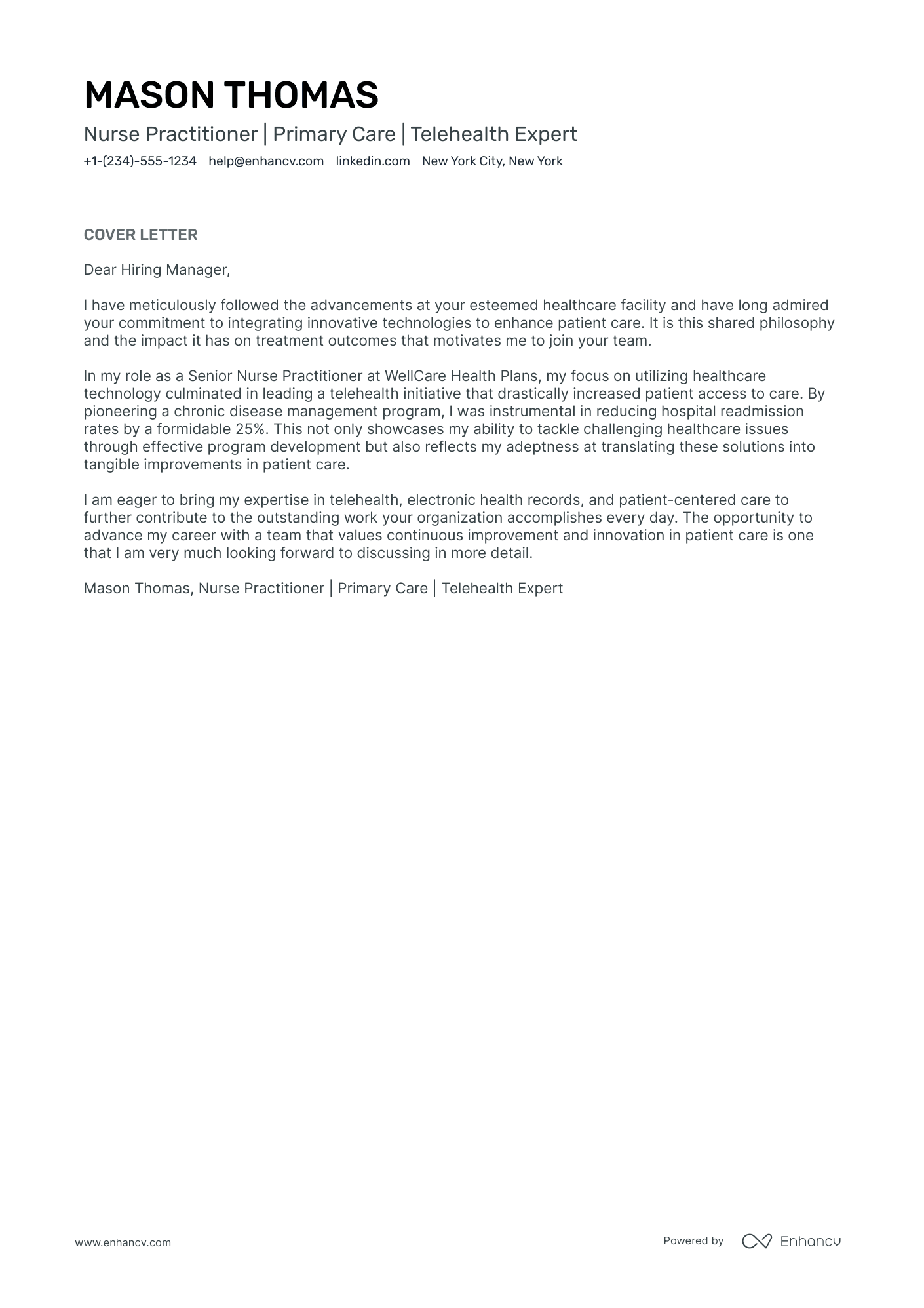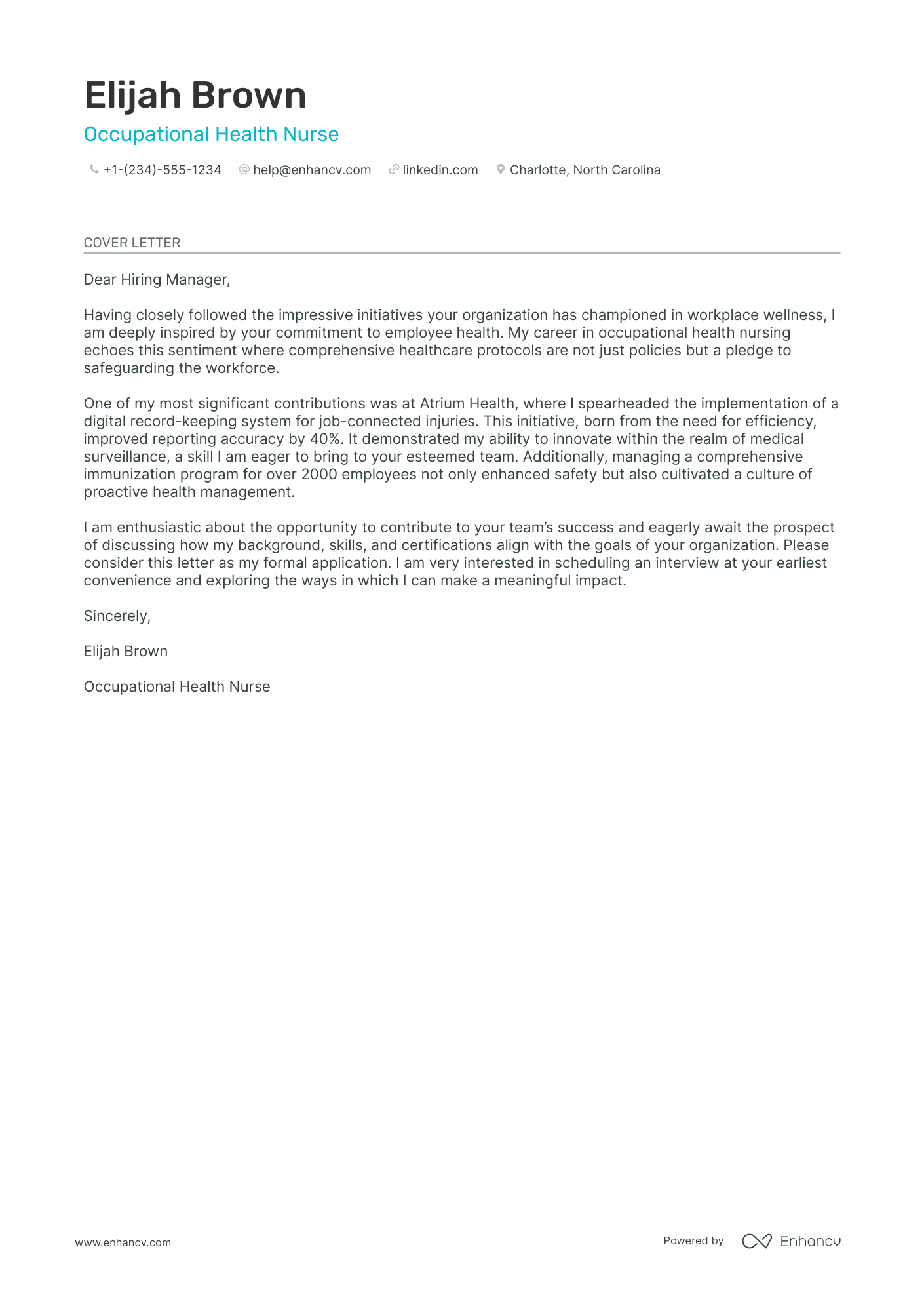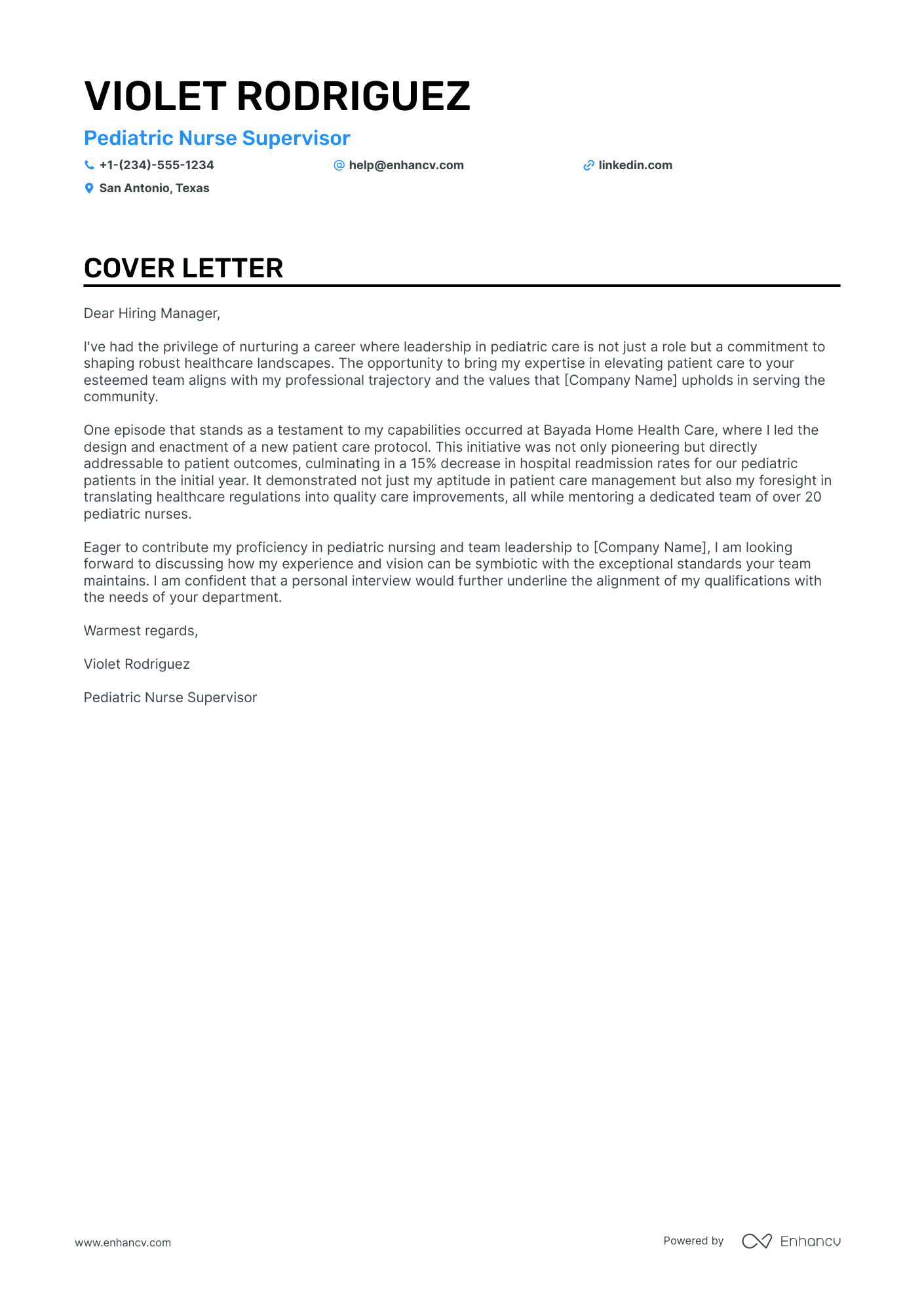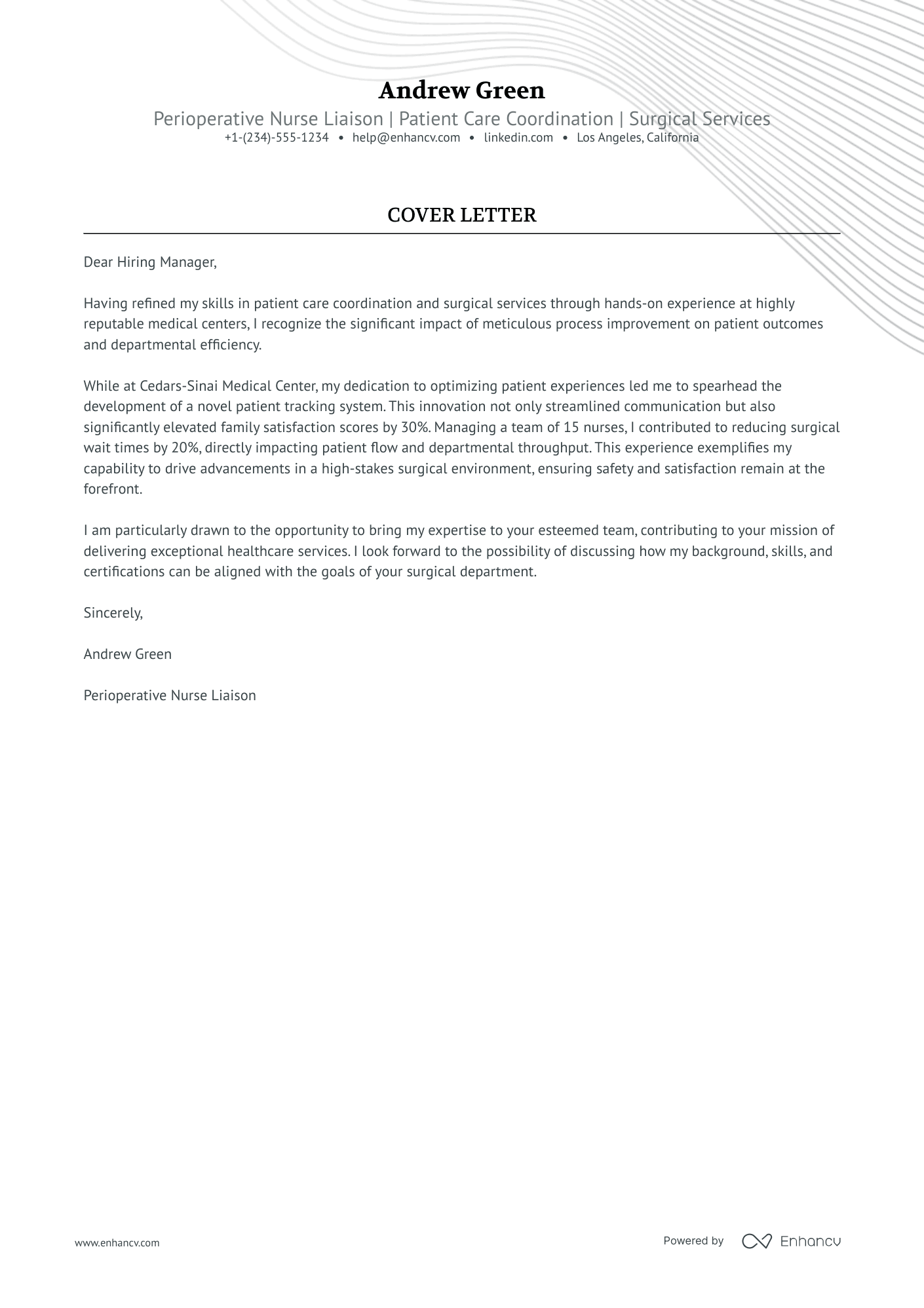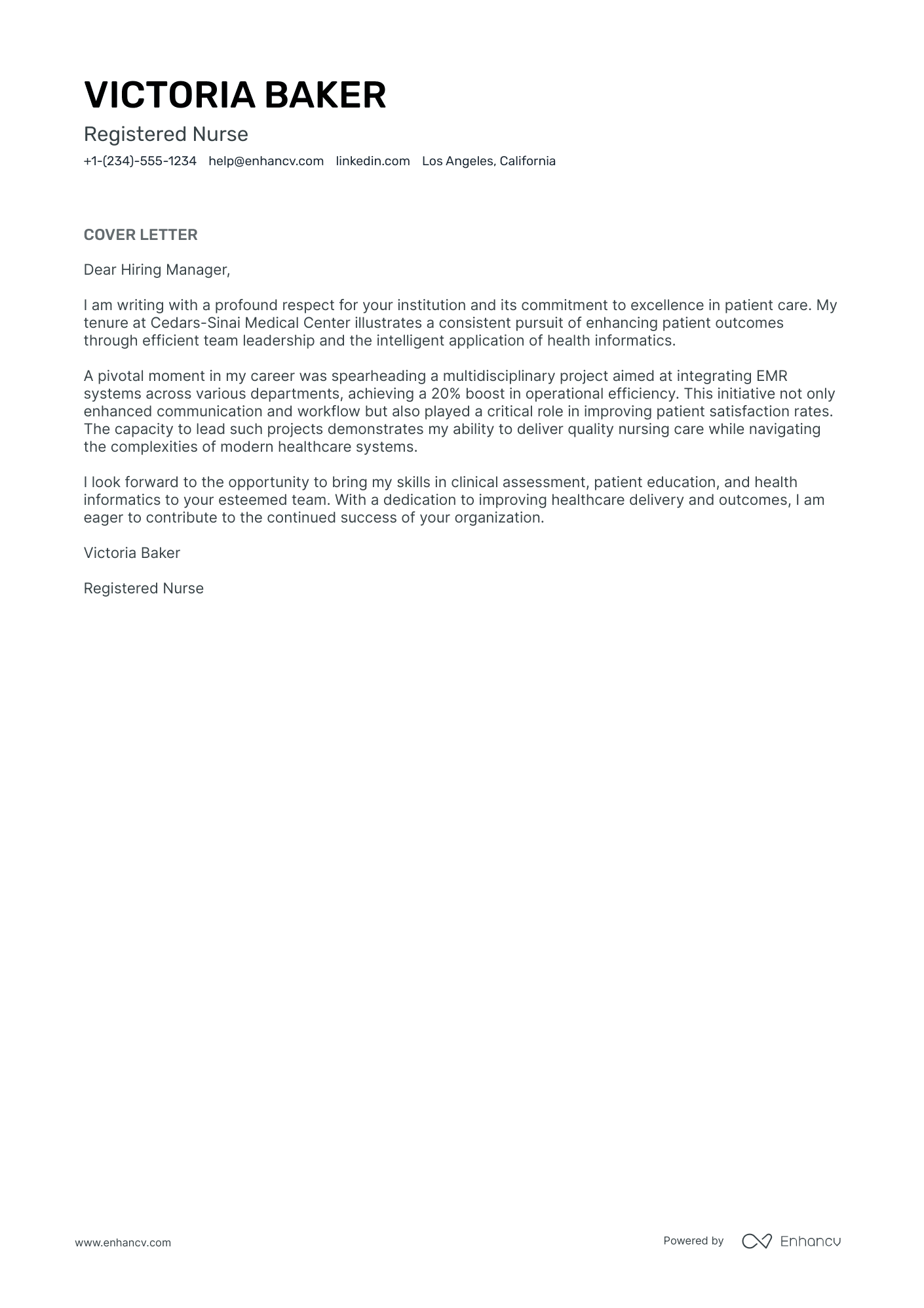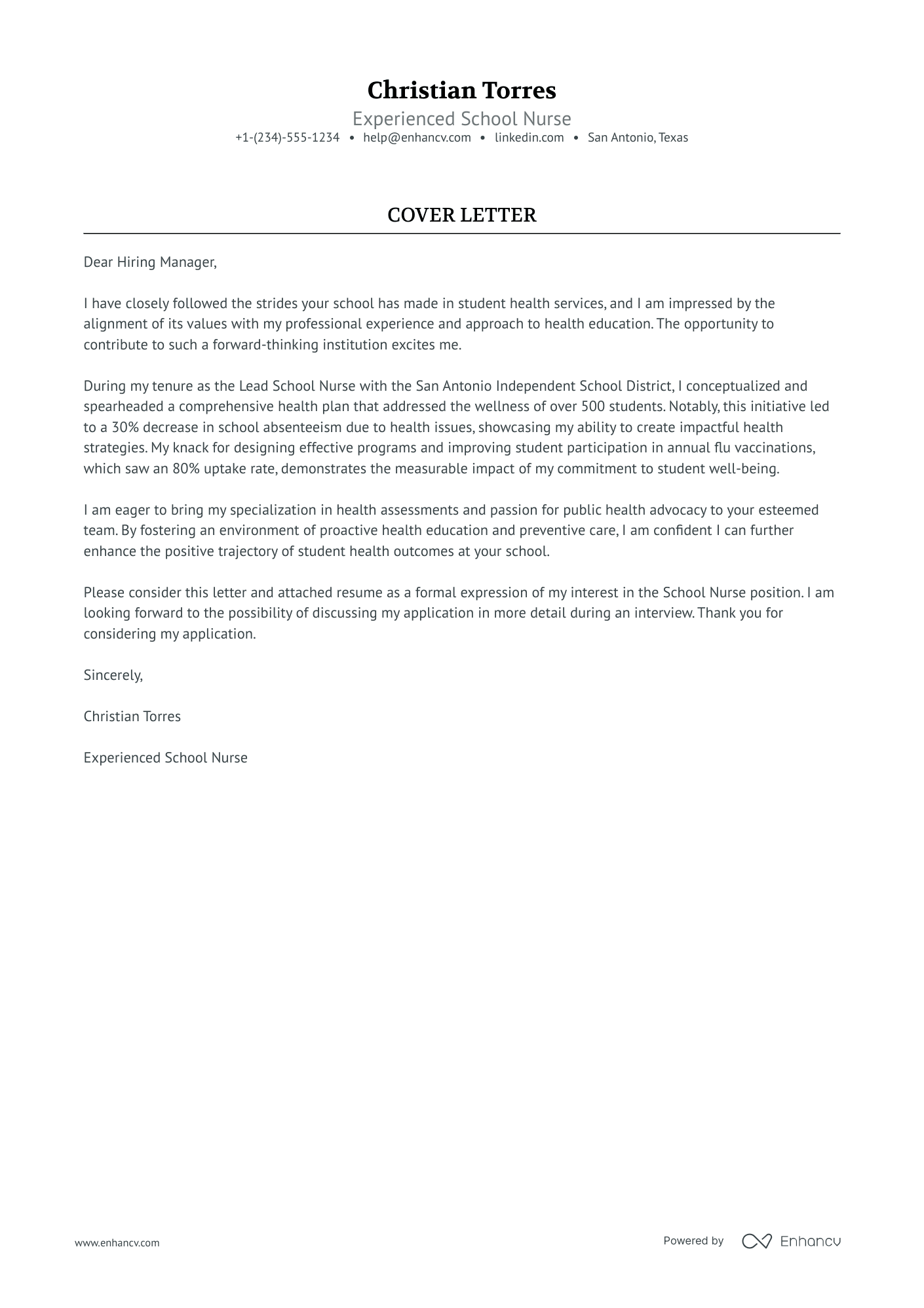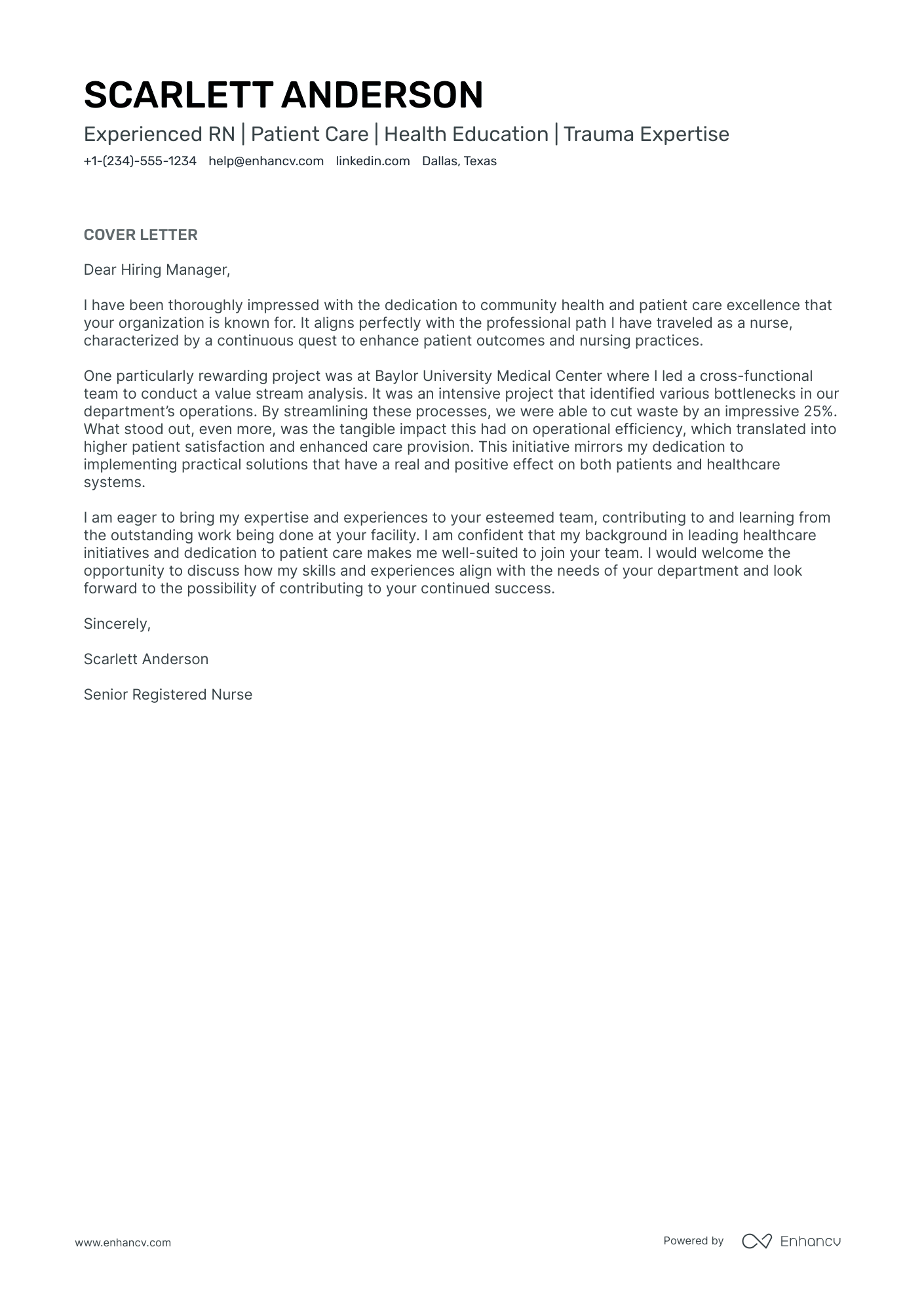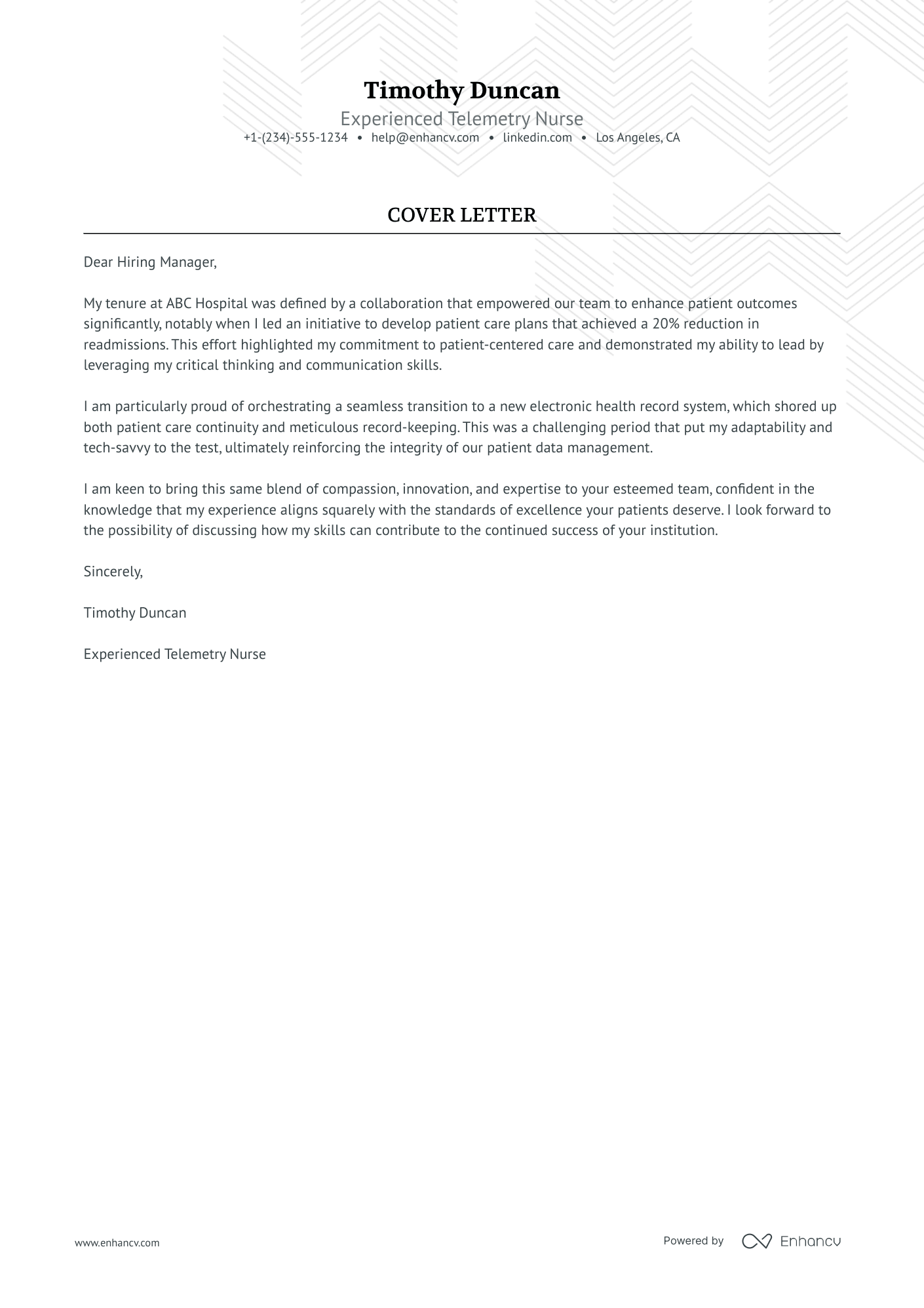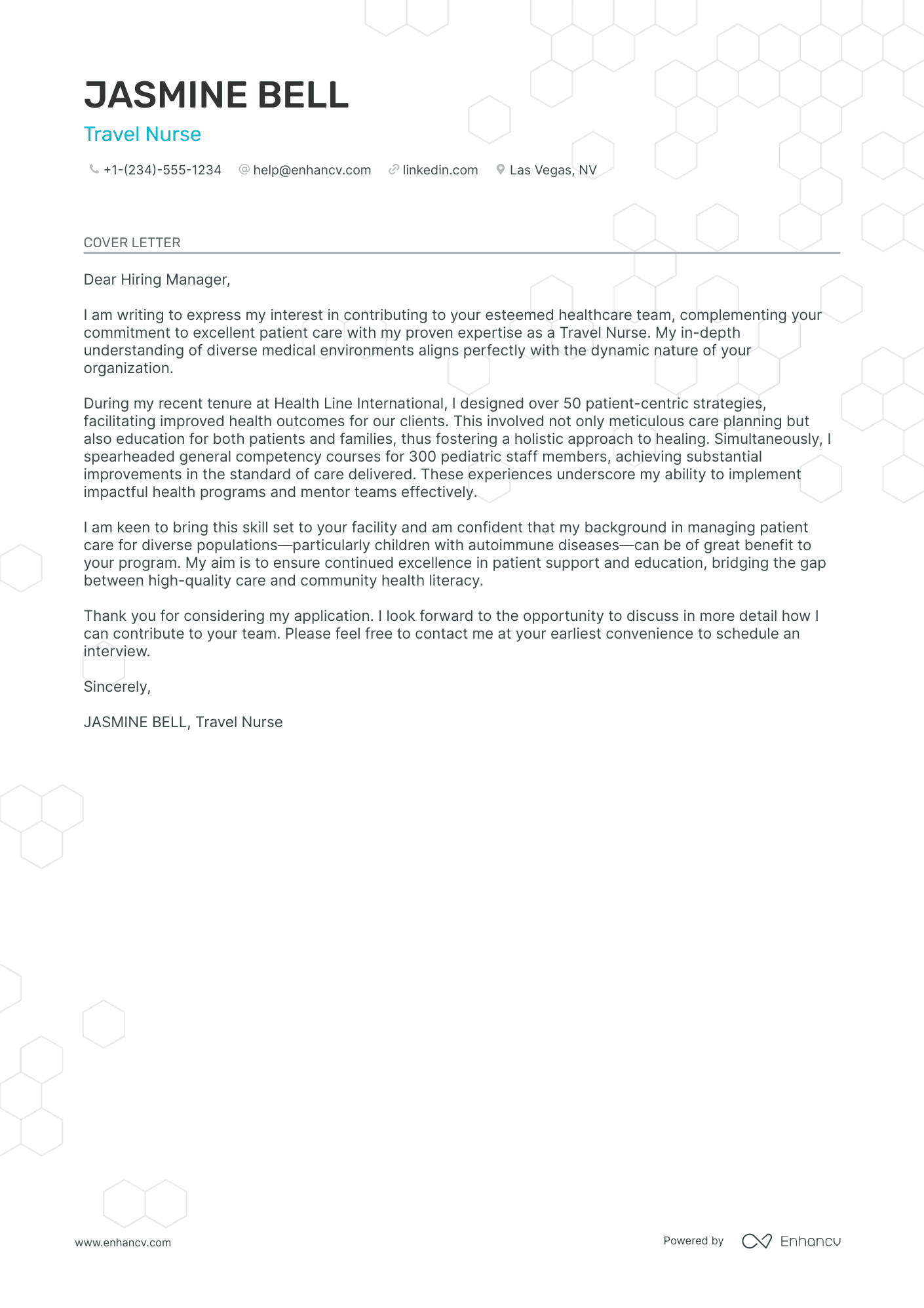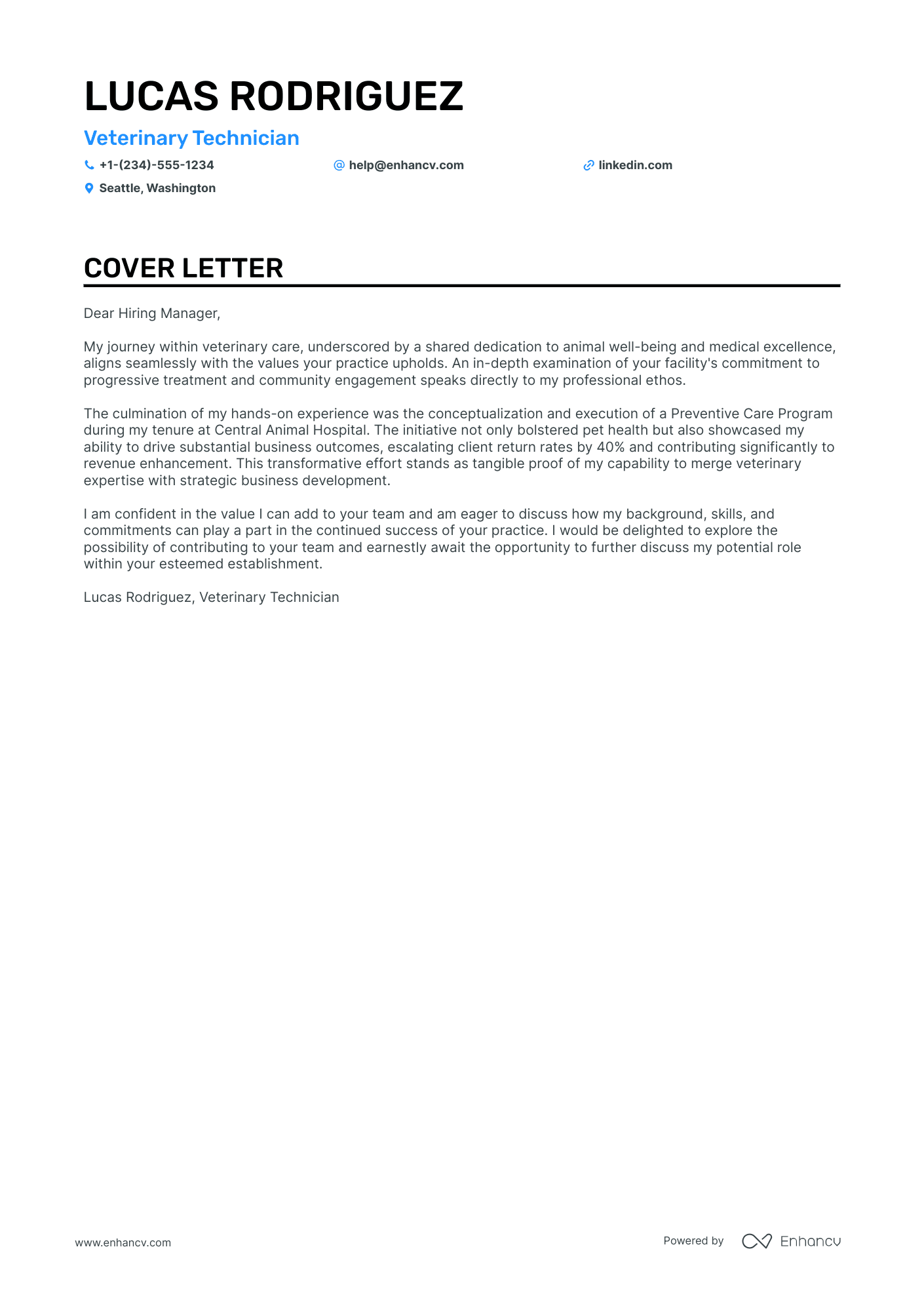Embarking on your job search, you've swiftly discovered the importance of a well-crafted nurse cover letter, a step that often feels daunting. Beyond your resume, this letter is your chance to narrate your proudest professional achievement in a story that captivates your future employer. While maintaining formality, sidestep the clichés that bury your unique voice, and keep it concise; your powerful, one-page introduction can set the stage for career success. Let's dive in and design a cover letter that stands out.
- Including all the must-have paragraphs in your structure for an excellent first impression;
- Learning how to write individual sections from industry-leading cover letter examples;
- Selecting the best accomplishment to tell an interesting and authority-building professional story;
- Introducing your profile with personality, while meeting industry standards.
And, if you want to save some time, drag and drop your nurse resume into Enhancv's AI, which will assess your profile and write your job-winning cover letter for you.
If the nurse isn't exactly the one you're looking for we have a plethora of cover letter examples for jobs like this one:
- Nurse resume guide and example
- Social Work Student cover letter example
- Oral Surgery Assistant cover letter example
- Licensed Practical Nurse cover letter example
- Pacu Nurse cover letter example
- Nicu Nurse cover letter example
- Ob Gyn Medical Assistant cover letter example
- Hemodialysis Nurse cover letter example
- Public Health cover letter example
- Medical Surgical Nurse cover letter example
- Pediatric Nurse cover letter example
Nurse cover letter example
TAYLOR FOSTER
Chicago, IL
+1-(234)-555-1234
help@enhancv.com
- Highlighting specific achievements related to the role, such as reducing infection rates, shows the candidate’s impact on previous organizations and implies potential benefits for the new employer.
- Emphasizing leadership experience and the ability to manage a multidisciplinary team aligns with responsibilities that may be required in a Registered Nurse position at a hospital.
- Illustrating a commitment to patient care and safety helps align the candidate's values with those of the healthcare facility, which is an essential aspect of working in a hospital environment.
- Explicitly stating the willingness to discuss how the candidate's skills and experience can benefit the hospital demonstrates proactive engagement and eagerness to contribute to the institution's mission.
Standard formatting for your nurse cover letter
Structure your nurse cover letter, following industry-leading advice, to include:
- Header - with your name, the role you're applying for, the date, and contact details;
- Greeting - make sure it's personalized to the organization;
- Introduction paragraph - no more than two sentences;
- Body paragraph - answering why you're the best candidate for the role;
- Closing paragraph - ending with a promise or a call to action;
- Signature - now that's optional.
Set up your nurse cover letter for success with our templates that are all single-spaced and have a one-inch margin all around.
Use the same font for your nurse cover as the one in your resume(remember to select a modern, Applicant Tracker System or ATS favorites, like Raleway, Volkhov, or Chivo instead of the worn-out Times New Roman).
Speaking of the ATS, did you know that it doesn't scan or assess your cover letter? This document is solely for the recruiters.
Our builder allows you to export your nurse cover letter in the best format out there: that is, PDF (this format keeps your information intact).
The top sections on a nurse cover letter
- Header: Includes the nurse's contact information, the date, and the employer's contact details; this section sets a professional tone and ensures the recruiter knows who the letter is from and how to get back in touch.
- Greeting: Addresses the hiring manager or recruitment team by name if possible; personalization shows the nurse has done their research and is genuinely interested in the position at that specific healthcare facility.
- Introduction: Briefly introduces the nurse, stating their current role, years of experience, and enthusiasm for the position applied for; this segment hooks the reader and gives a snapshot of the nurse's professional identity.
- Body: Describes the nurse's relevant experience, special skills, accomplishments, and any certifications that are pertinent to the job posting; it provides proof of competence and illustrates how they can contribute to the healthcare team and patient care.
- Closing: Summarizes the nurse’s interest in the role, thanks the reader for considering their application, and includes a call-to-action, such as expressing eagerness to discuss how they can contribute to the facility in an interview; it wraps up the letter with politeness and forward momentum.
Key qualities recruiters search for in a candidate’s cover letter
- Clinical skills and technical knowledge: Shows that the candidate is well-prepared to perform necessary medical procedures and provide high-quality patient care.
- Excellent communication skills: Enables effective interaction with patients, families, and the healthcare team, and is crucial for patient education and advocacy.
- Compassion and empathy: Essential for providing patient-centered care and for building trust and rapport with patients undergoing stressful health challenges.
- Adaptability and flexibility: Demonstrates the ability to handle the fast-paced and often unpredictable nature of healthcare environments.
- Attention to detail: Critical for administering medications, updating patient records accurately, and ensuring patient safety.
- Teamwork and collaboration: Vital for working effectively with interdisciplinary healthcare teams and ensuring cohesive patient care.
Greeting recruiters with your nurse cover letter salutation
What better way to start your conversation with the hiring manager, than by greeting them?
Take the time to find out who the professional, recruiting for the role, is.
Search on LinkedIn, the company website. And for those still keen on making a fantastic first impression, you could even contact the organization, asking for the recruiter's name and more details about the job.
Address recruiters in the nurse greeting by either their first name or last name. (e.g. "Dear Anthony" or "Dear Ms. Smarts").
If you're unable to discover the recruiter's name - don't go for the impersonal "To whom it may concern", but instead use "Dear HR team".
List of salutations you can use
- Dear Hiring Manager,
- Dear [Employer's Name],
- Dear [Department] Team,
- Dear [Title] [Last Name],
- Dear [Job Title] Hiring Committee,
Get creative with your nurse cover letter introduction
Recruiters are going to assess plenty of candidate profiles for the role. Thus, anything you do to stand out will win you brownie points.
Use your nurse cover letter introduction to share something memorable about your experience.
But before you go down the rabbit hole of creativity and humor, align your message with the company culture.
For example, if you are applying for a role in some startup, use those first two sentences to tell a funny story (about your experience) to quickly connect with the recruiter.
What to write in the body of your nurse cover letter
Now that you've got your intro covered, here comes the heart and soul of your nurse cover letter.
It's time to write the middle or body paragraphs. This is the space where you talk about your relevant talent in terms of hard skills (or technologies) and soft (or people and communication) skills.
Keep in mind that the cover letter has a different purpose from your nurse resume.
Yes, you still have to be able to show recruiters what makes your experience unique (and applicable) to the role.
But, instead of just listing skills, aim to tell a story of your one, greatest accomplishment.
Select your achievement that:
- covers job-crucial skills;
- can be measured with tangible metrics;
- shows you in the best light.
Use the next three to six paragraphs to detail what this success has taught you, and also to sell your profile.
Closing paragraph basics: choose between a promise and a call to action
You've done all the hard work - congratulations! You've almost reached the end of your nurse cover letter.
But how do you ensure recruiters, who have read your application this far, remember you?
Most nurse professionals end their cover letter with a promise - hinting at their potential and what they plan on achieving if they're hired.
Another option would be to include a call for follow-up, where you remind recruiters that you're very interested in the opportunity (and look forward to hearing from them, soon).
Choose to close your nurse cover letter in the way that best fits your personality.
Keep this in mind when writing your zero experience nurse cover letter
Even though you may not have any professional experience, your nurse cover letter should focus on your value.
As a candidate for the particular role, what sort of skills do you bring about? Perhaps you're an apt leader and communicator, or have the ability to analyze situations from different perspectives.
Select one key achievement from your life, outside work, and narrate a story that sells your abilities in the best light.
If you really can't think of any relevant success, you could also paint the picture of how you see your professional future developing in the next five years, as part of the company.
Key takeaways
Winning recruiters over shouldn't be difficult if you use your nurse cover letter to tell a story that:
- Is personalized by greeting your readers and focusing on key job skills greets;
- Isn't spread all over the place, but instead focuses on one key achievement and selling your value as a professional;
- Introduces your enthusiasm for the role, passion for the job, or creativity in communication;
- Is also visually appealing - meeting the best HR practices;
- Ends with a nod to the future and how you envision your growth, as part of the company.
Nurse cover letter examples
Explore additional nurse cover letter samples and guides and see what works for your level of experience or role.
By Role
